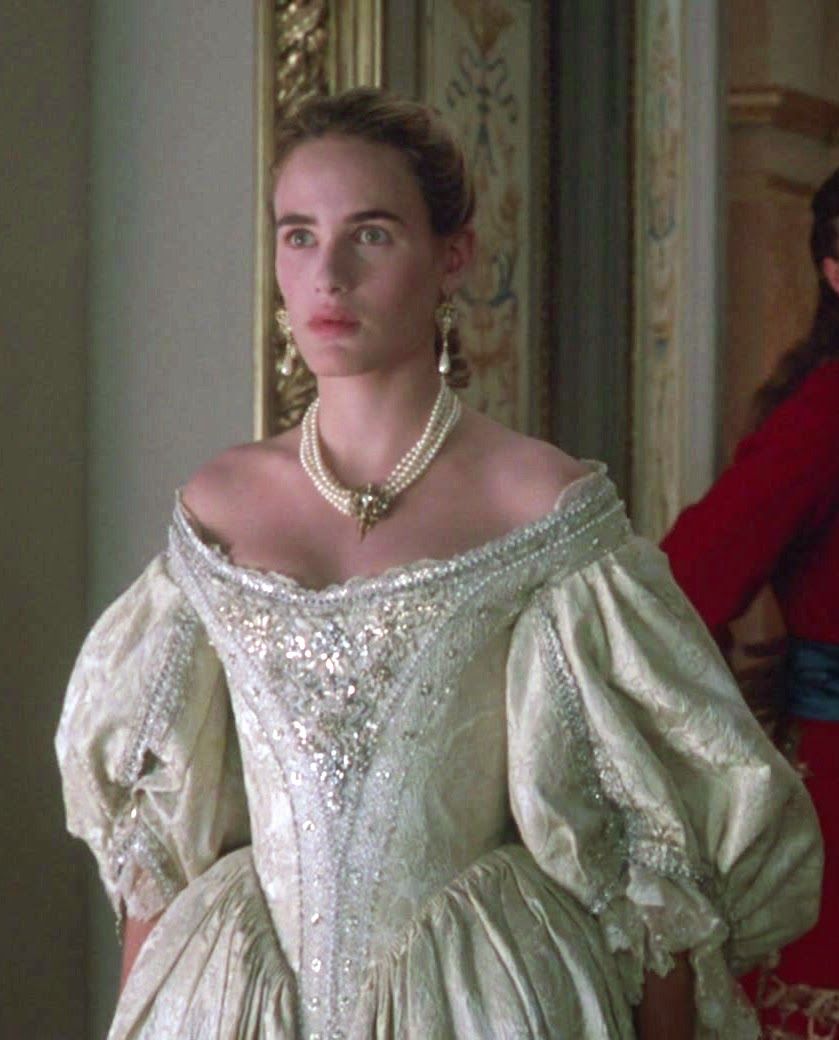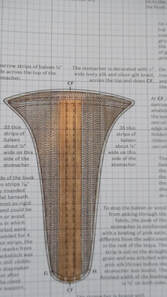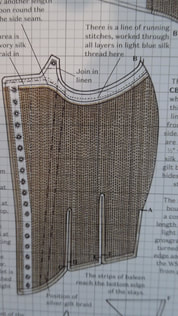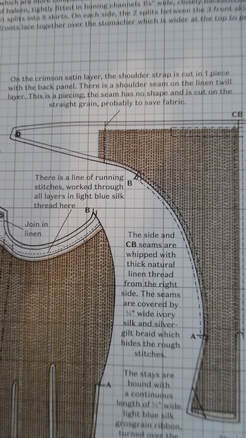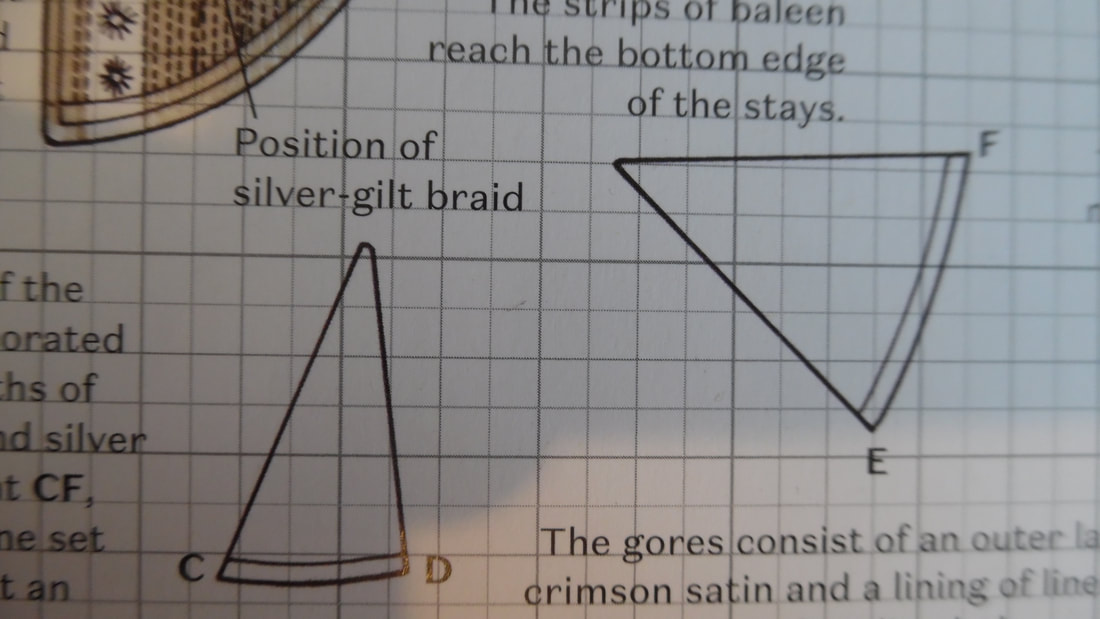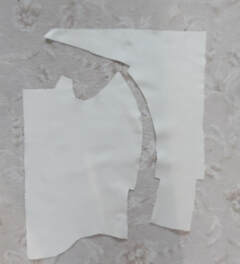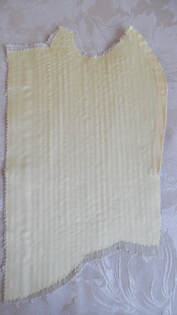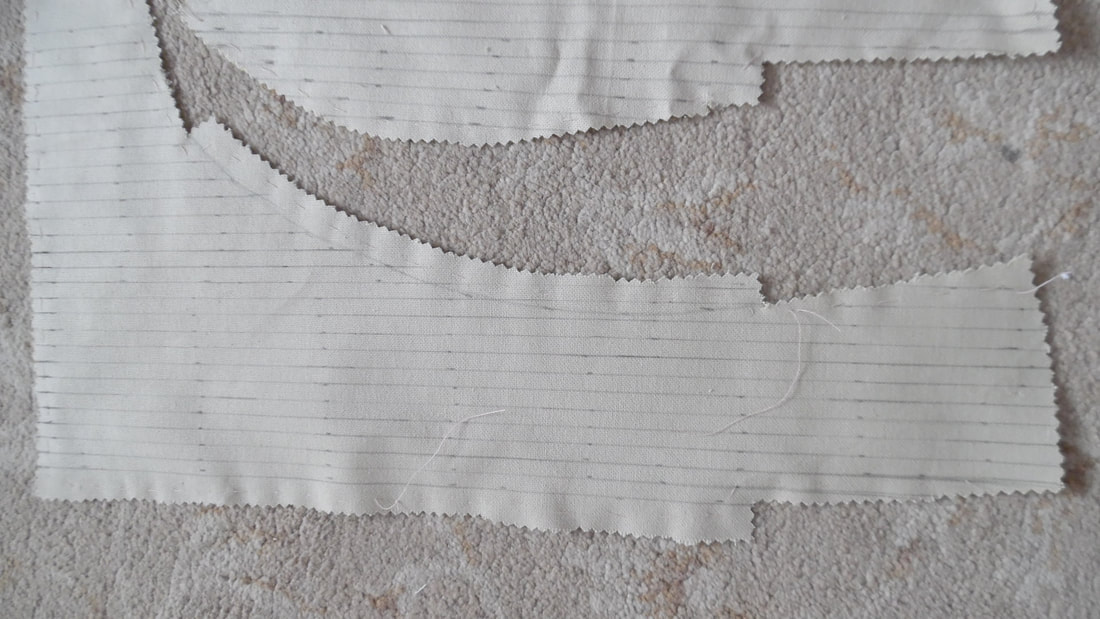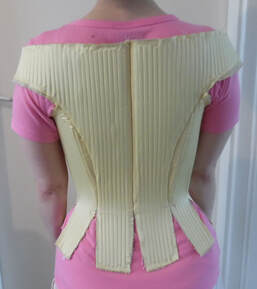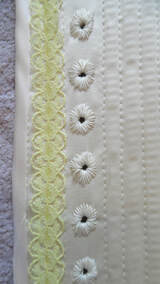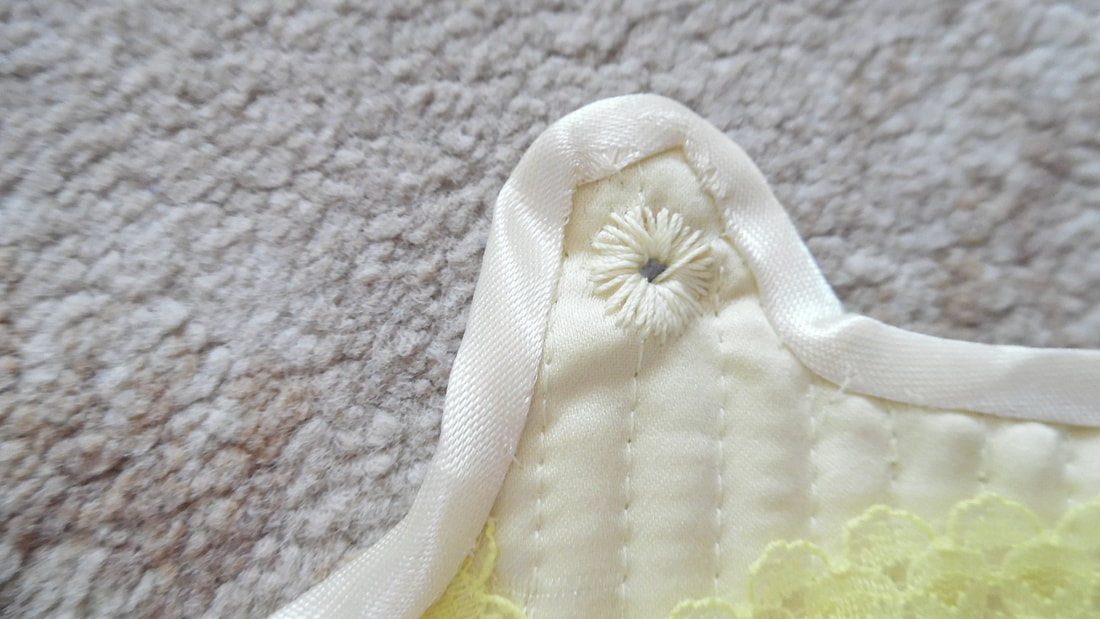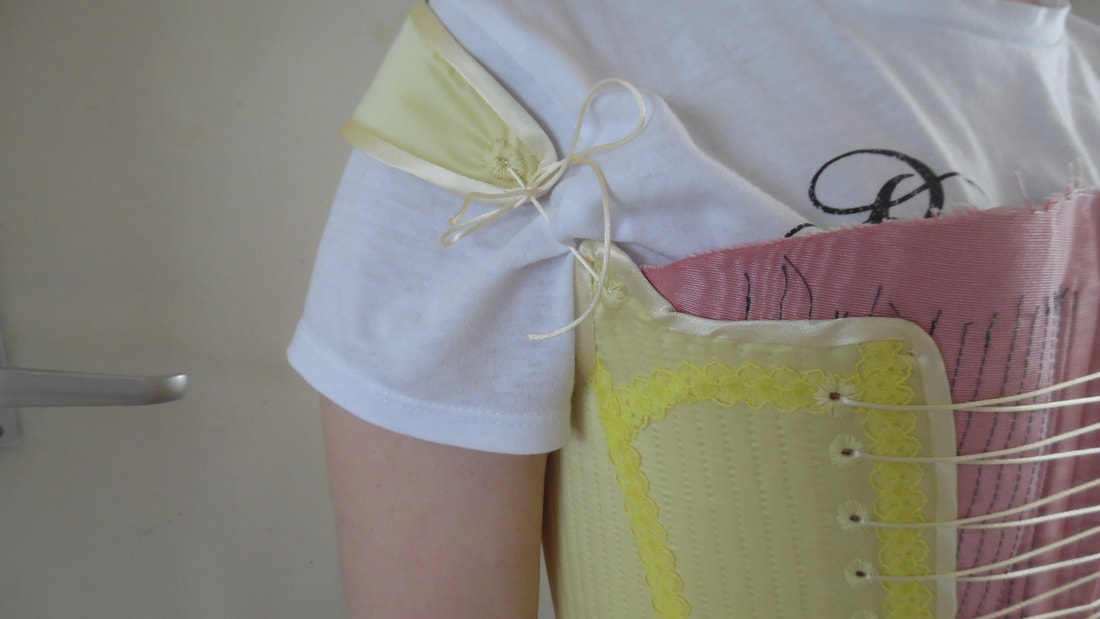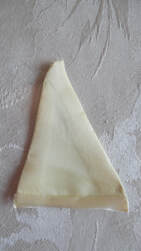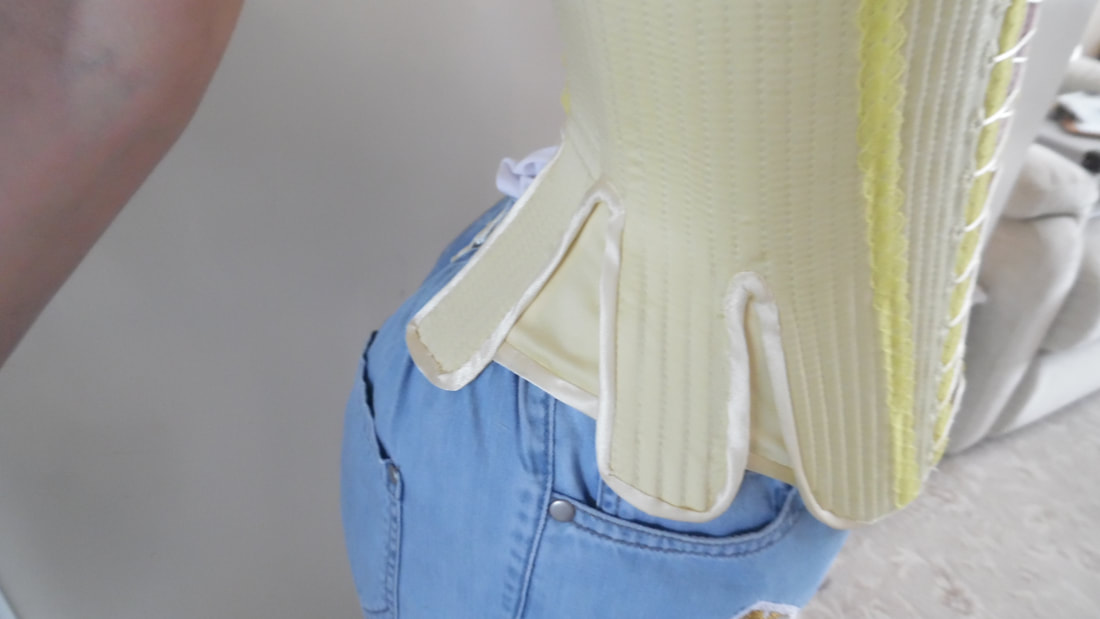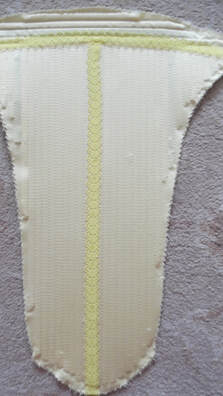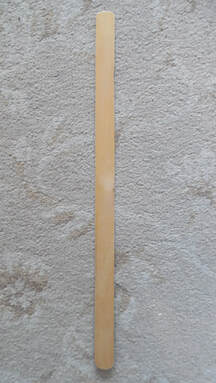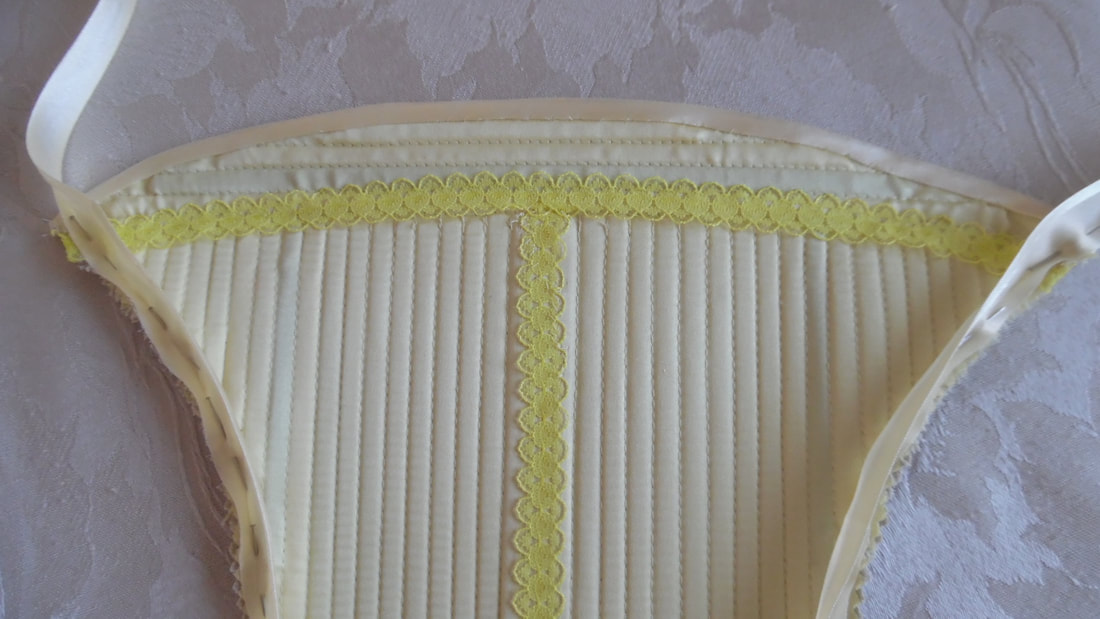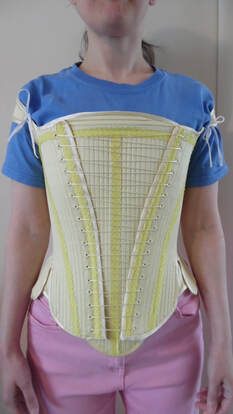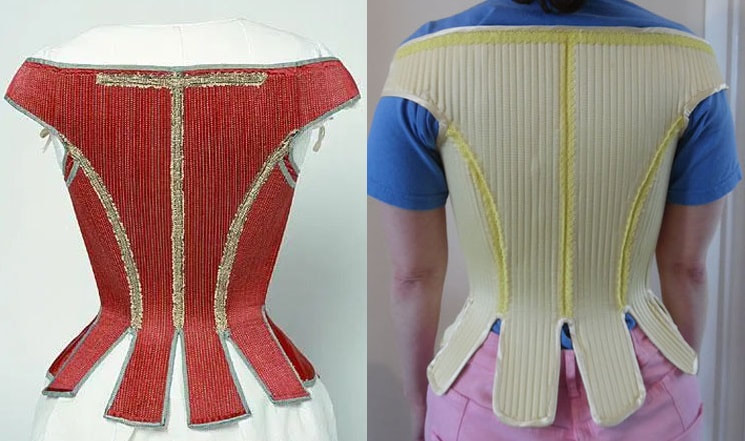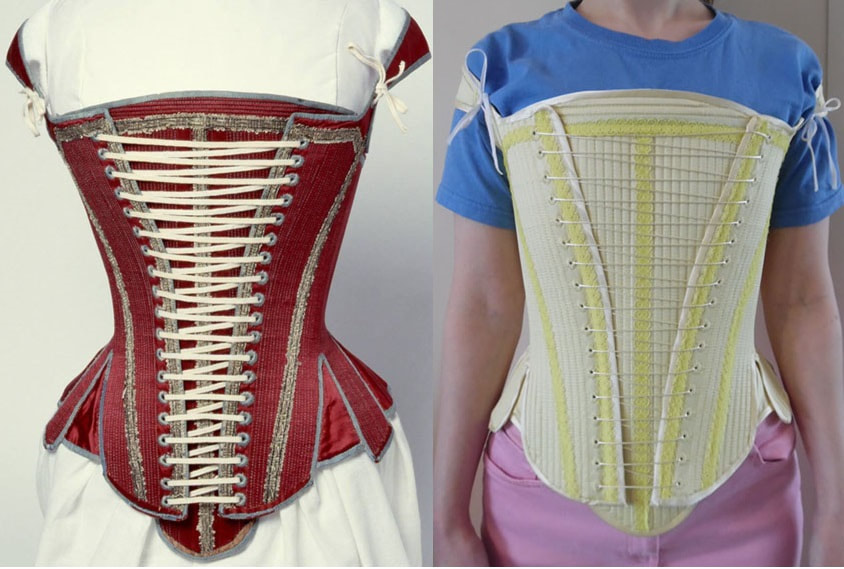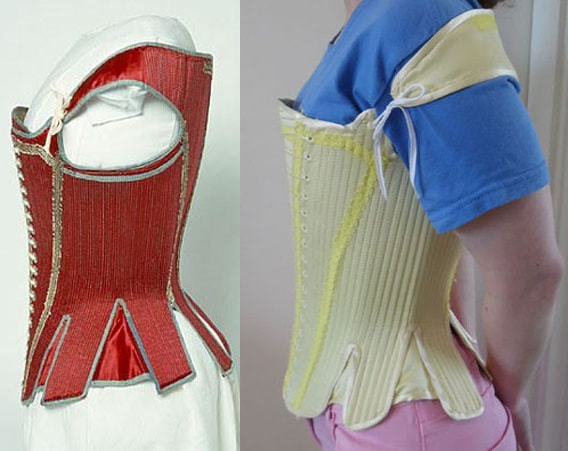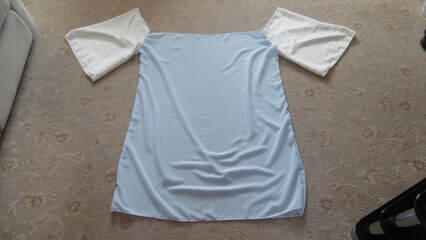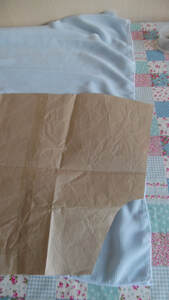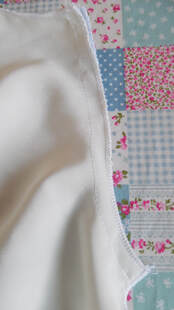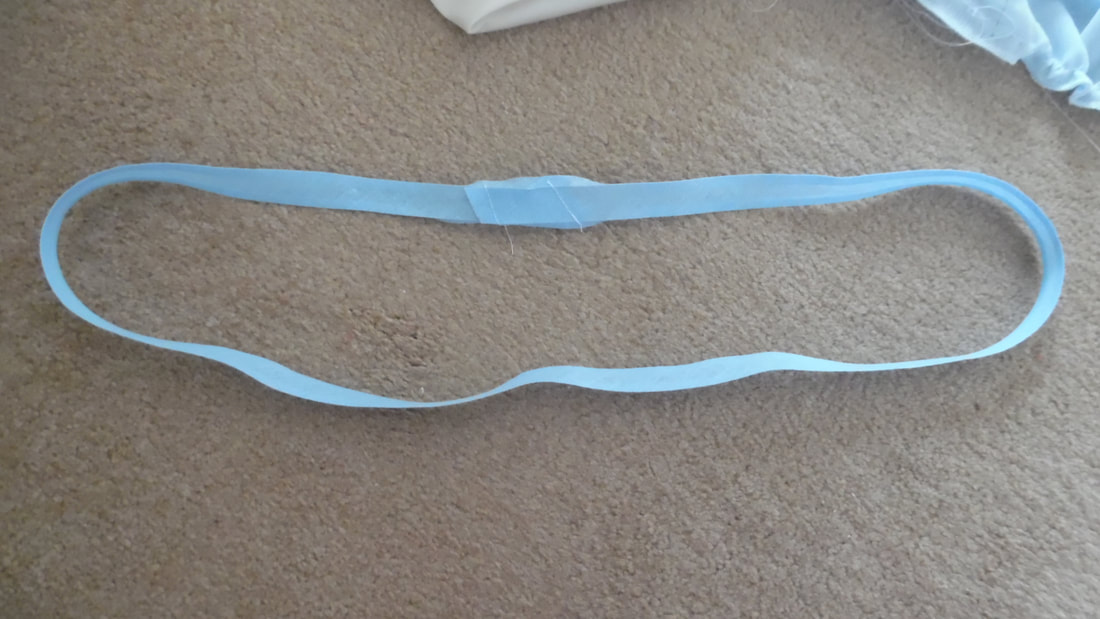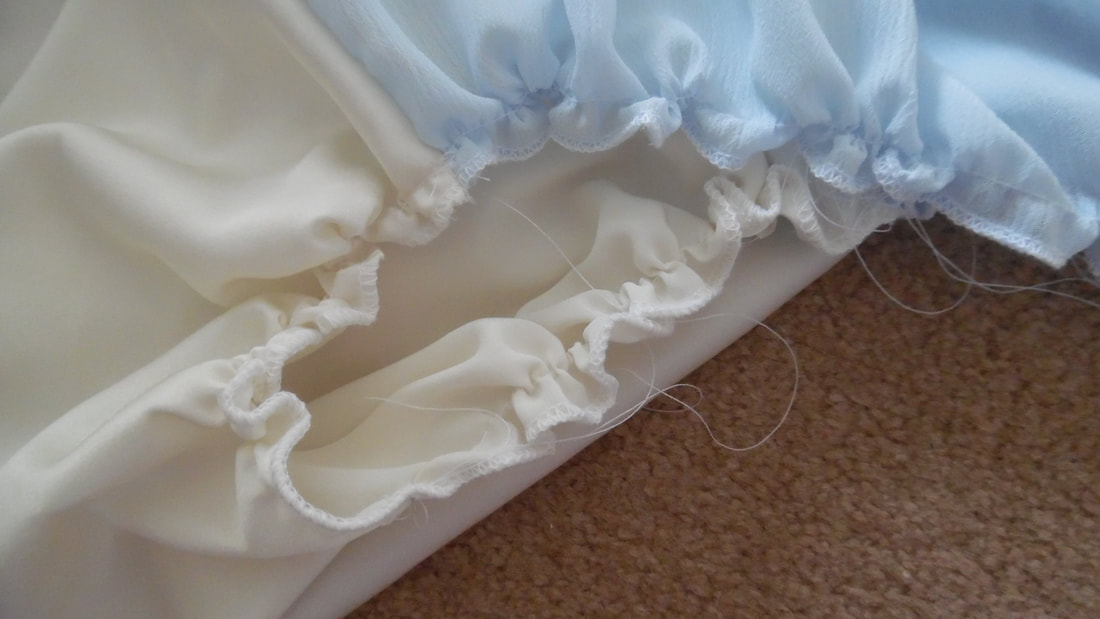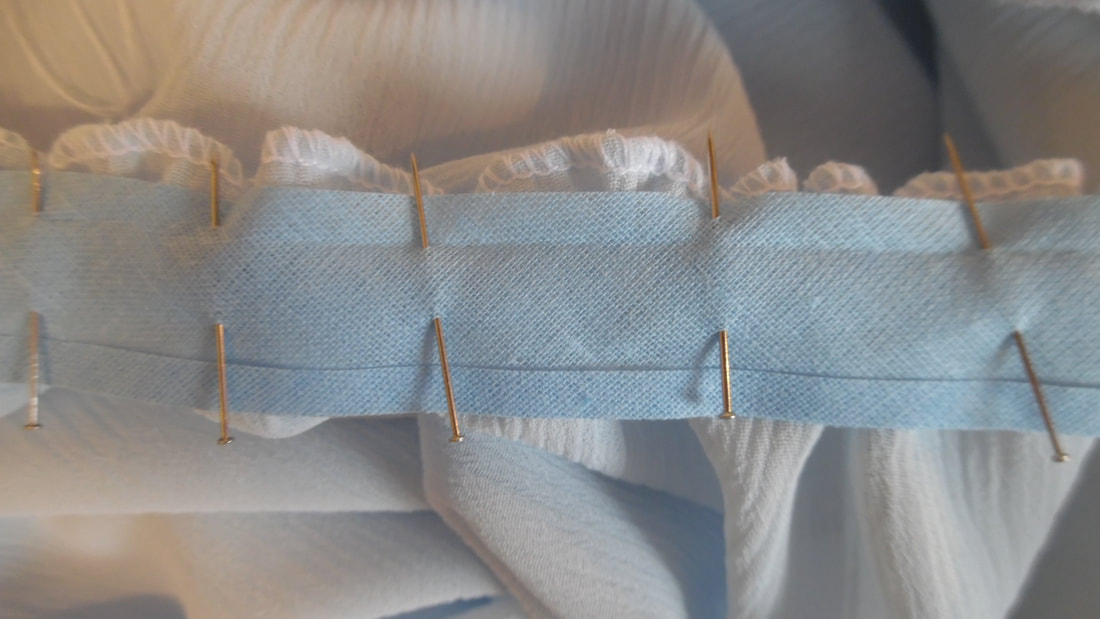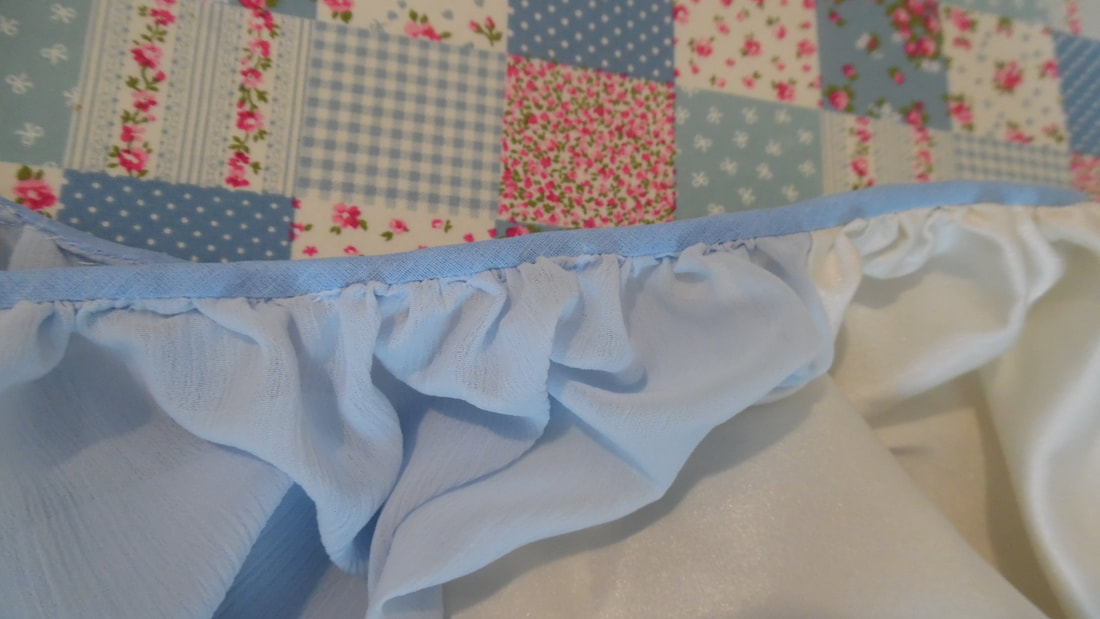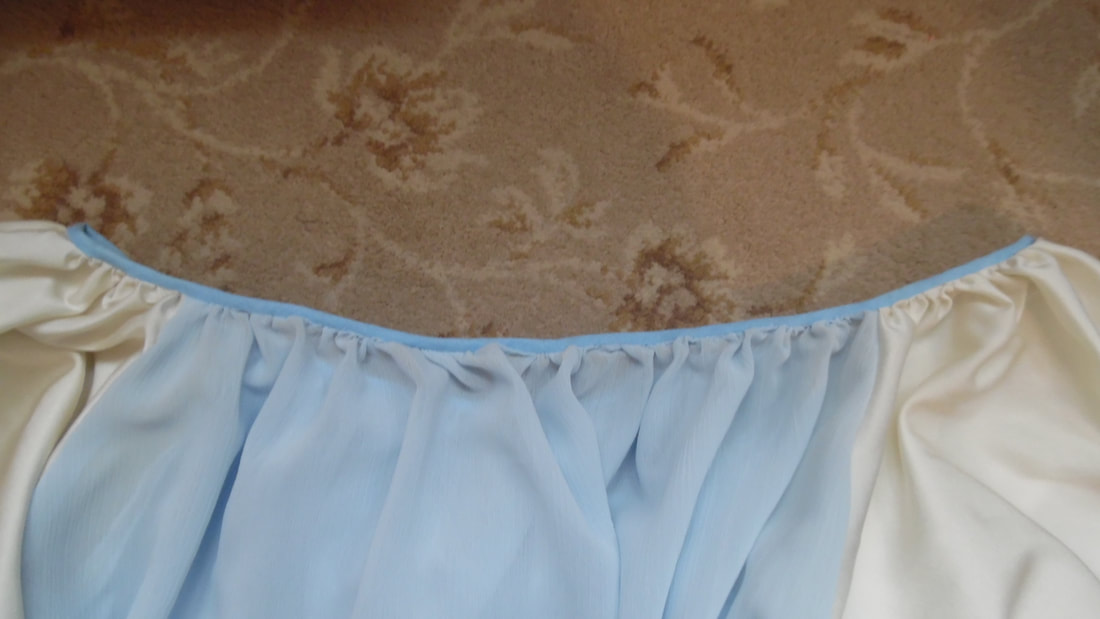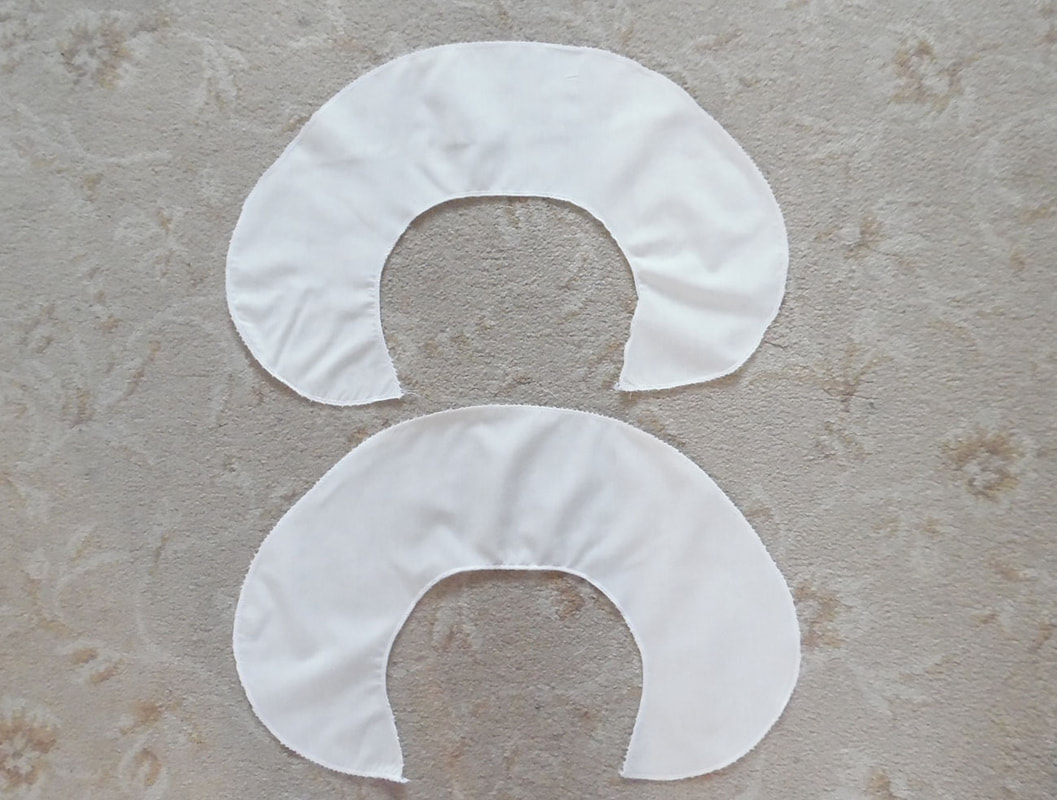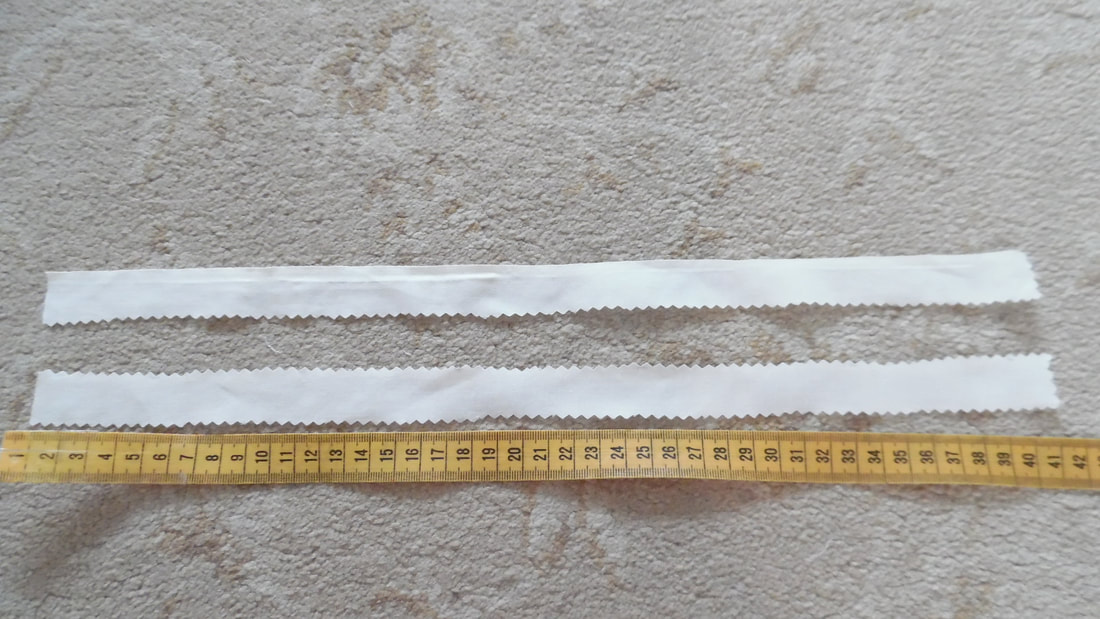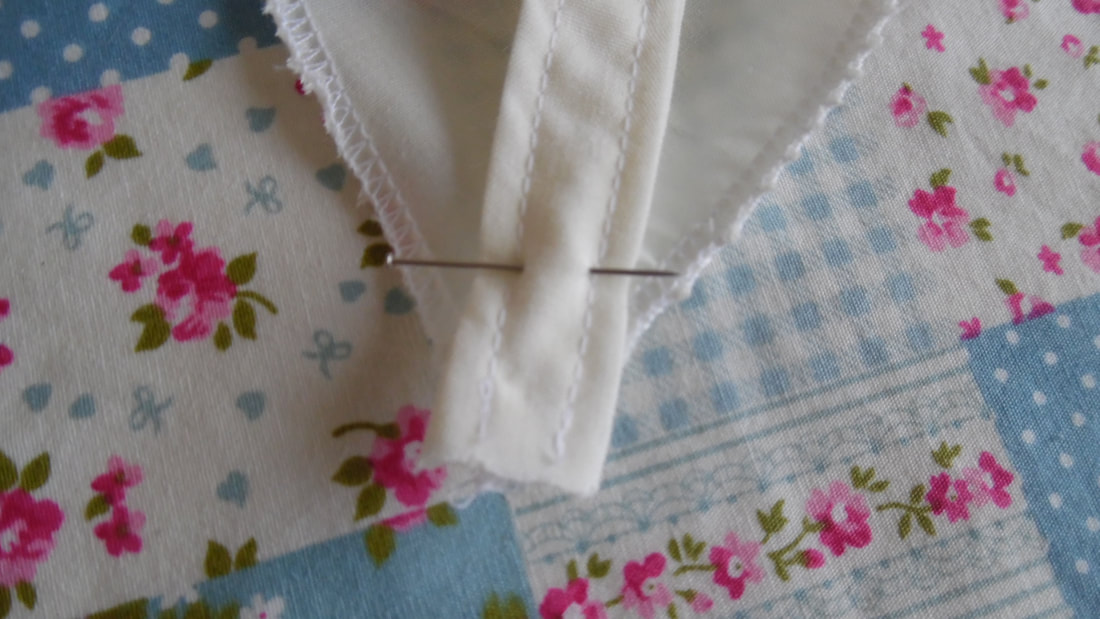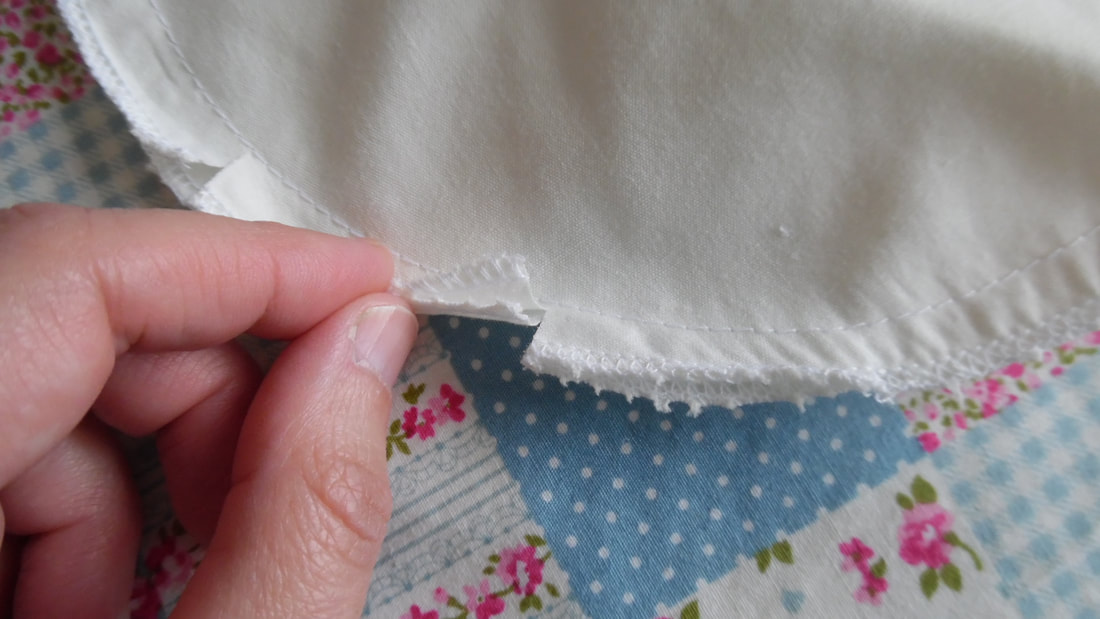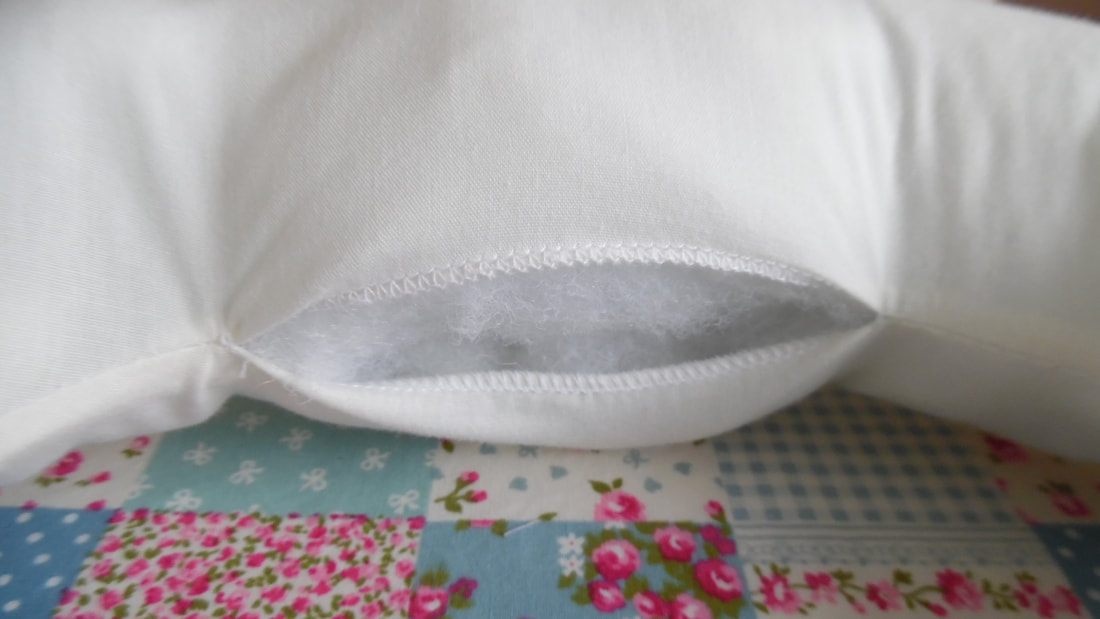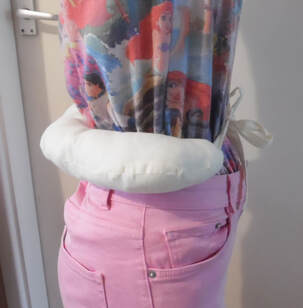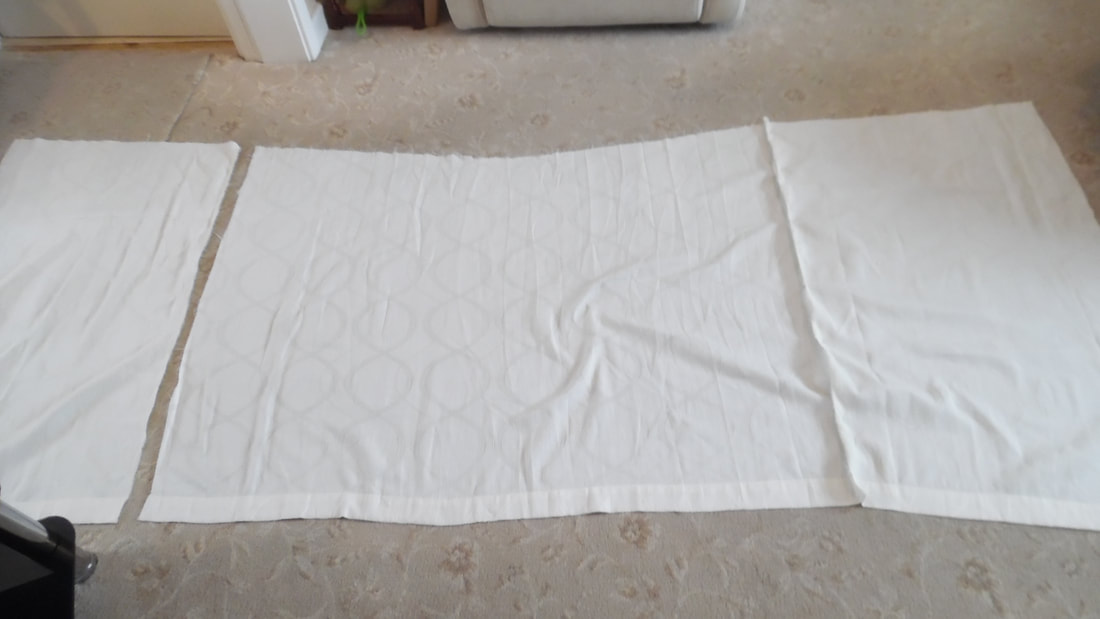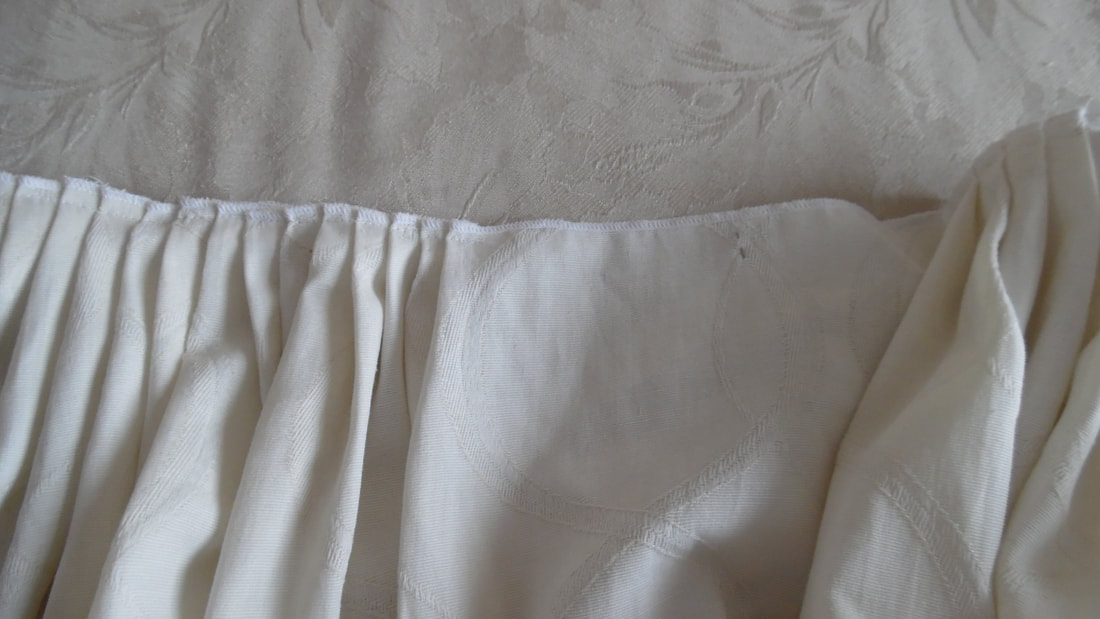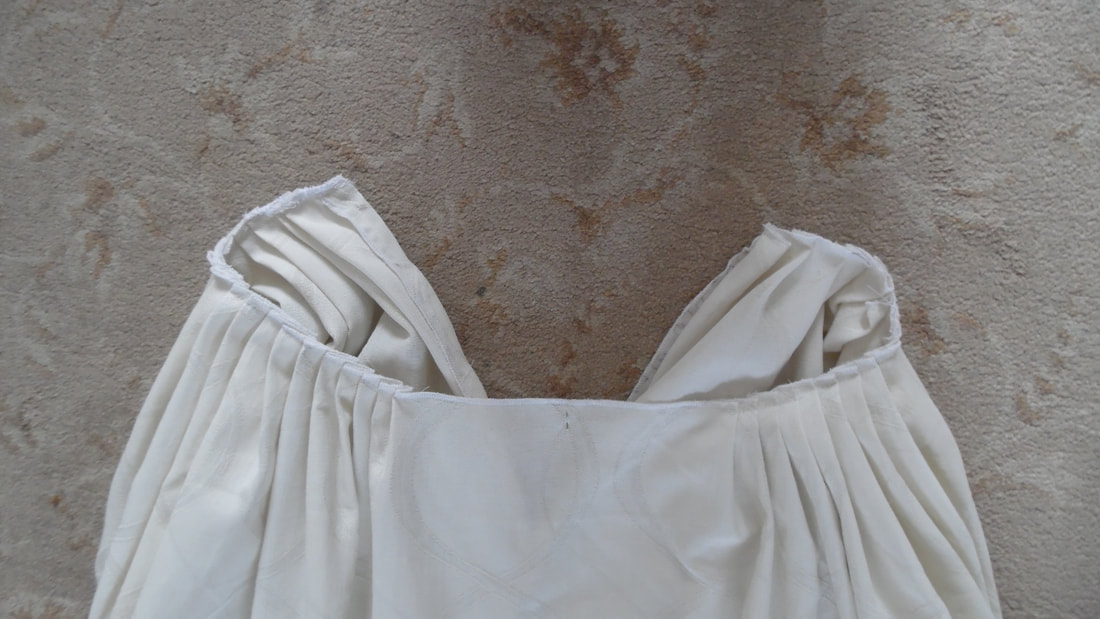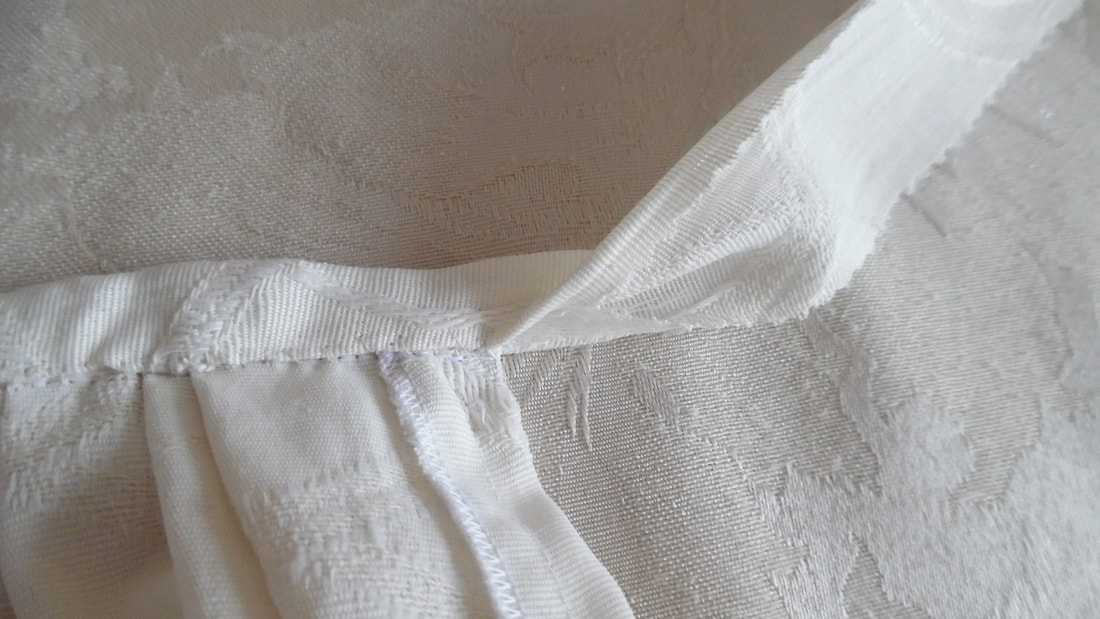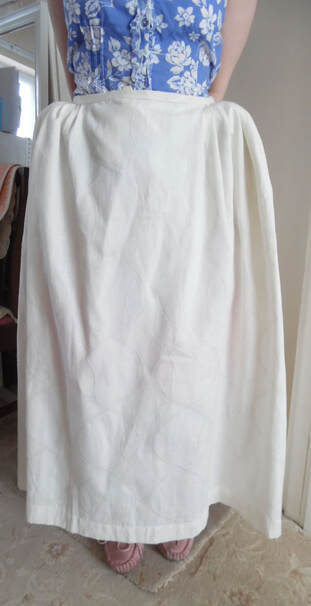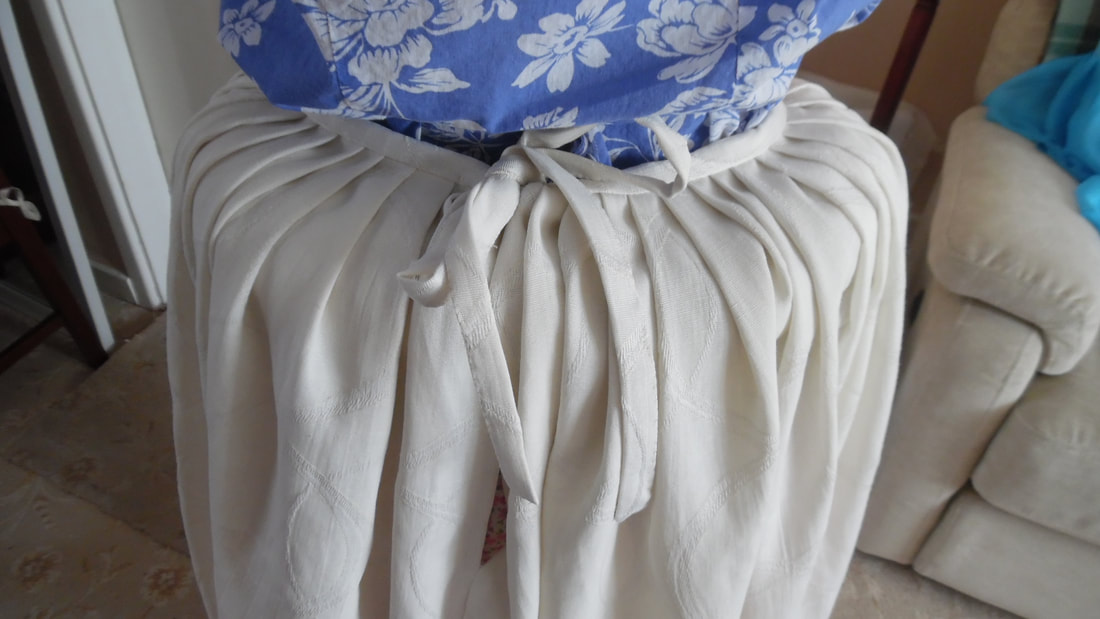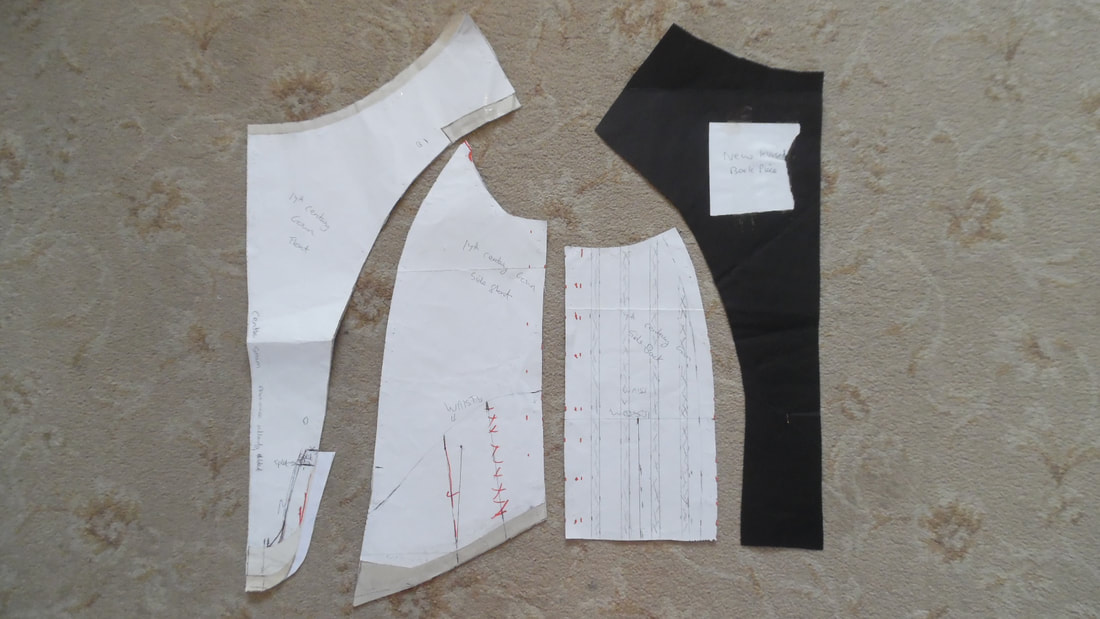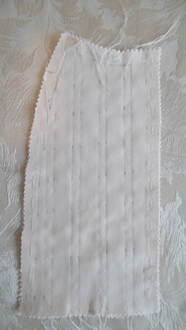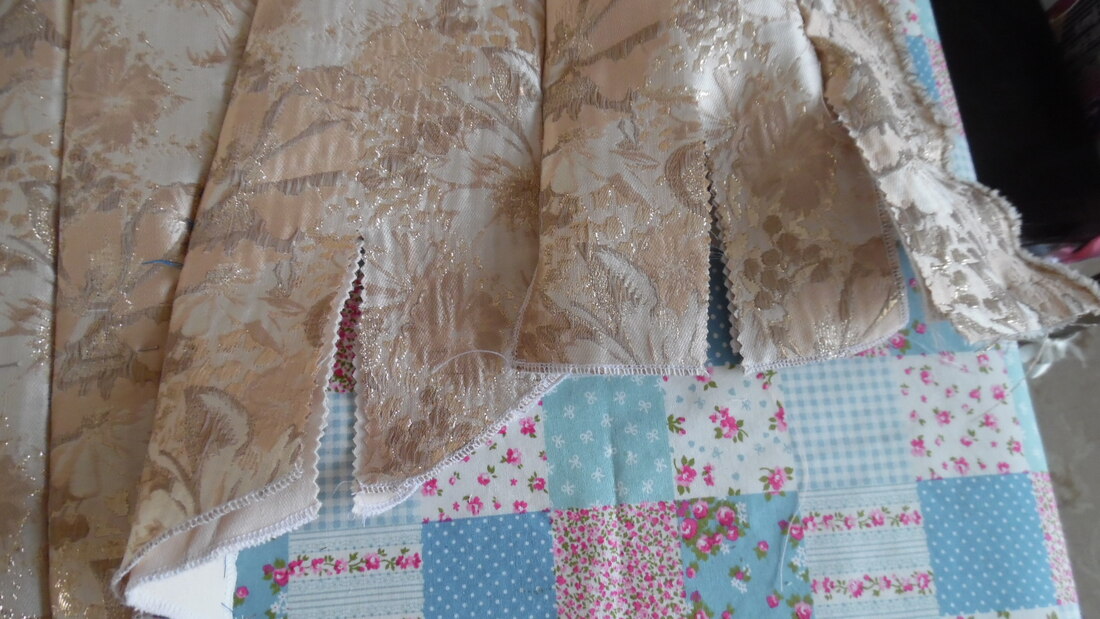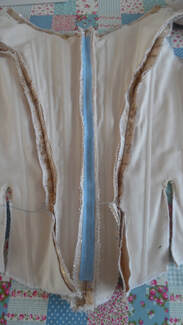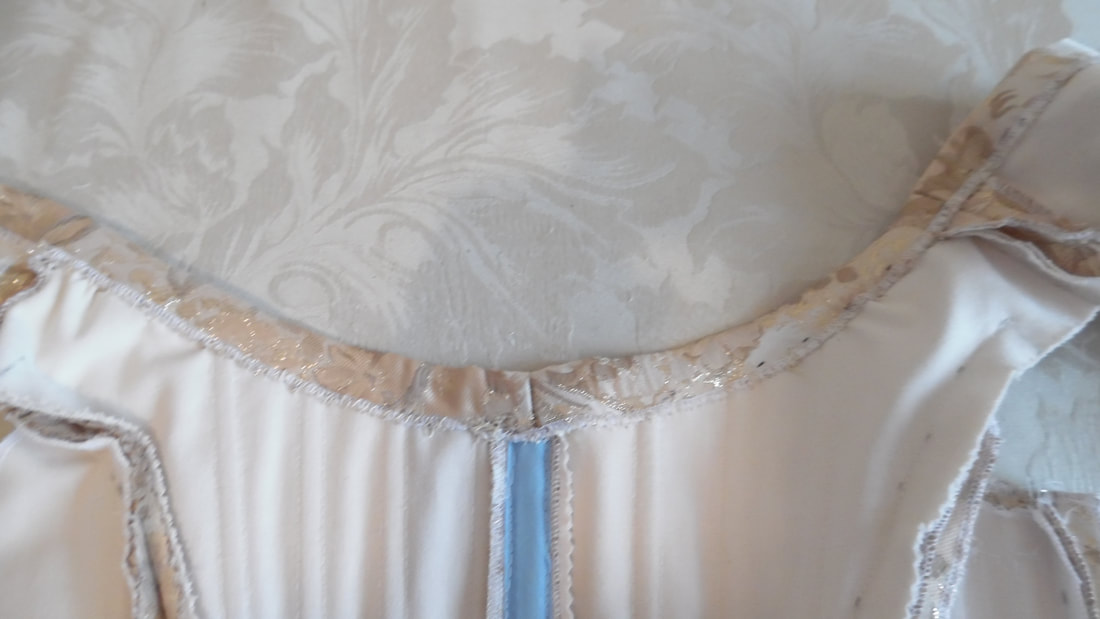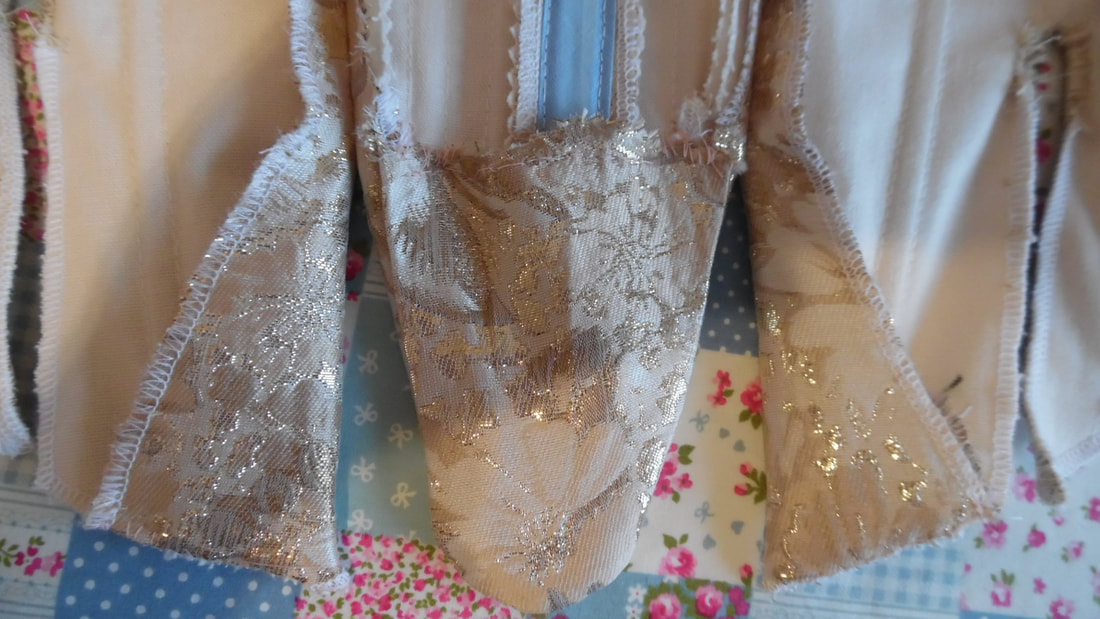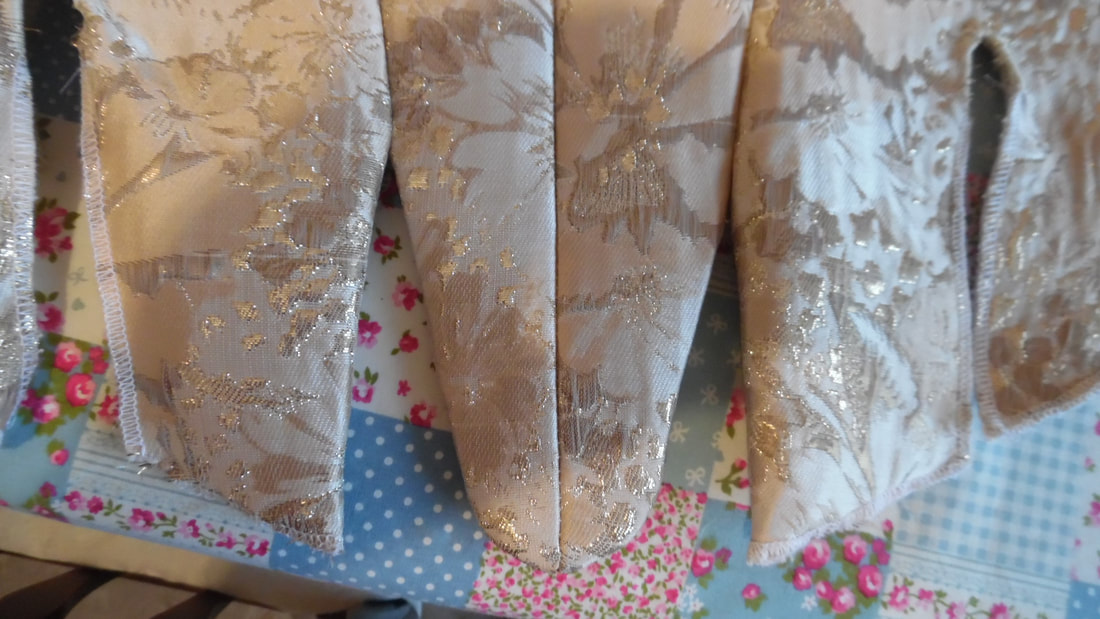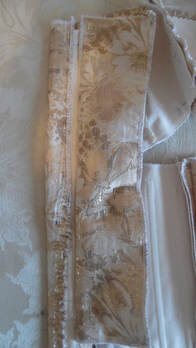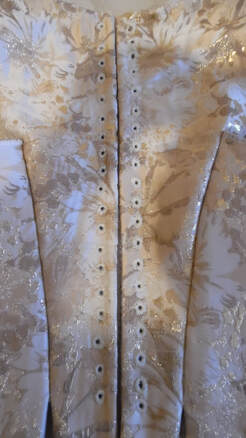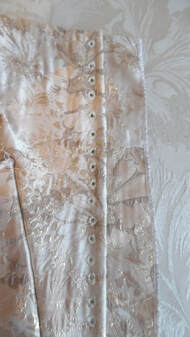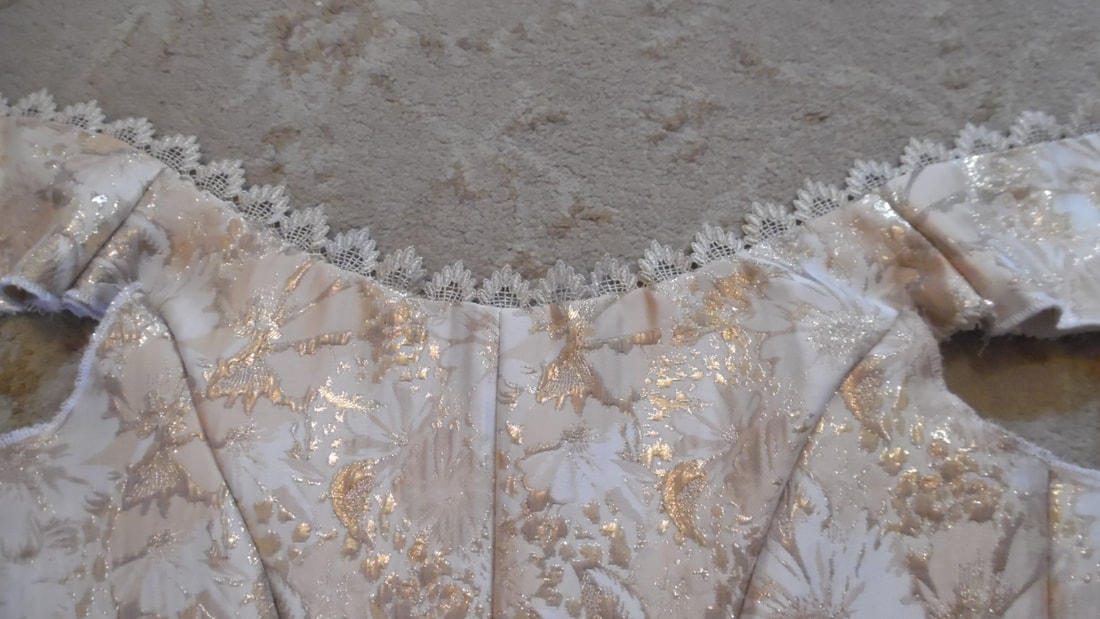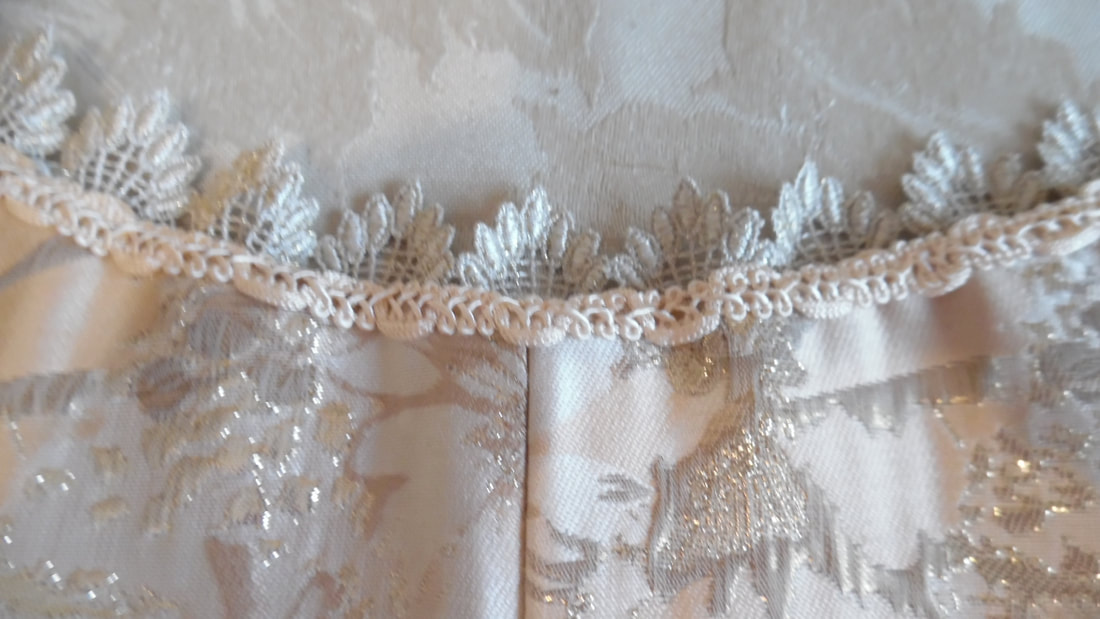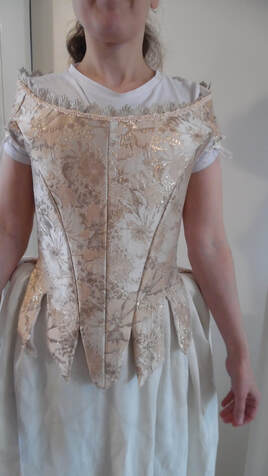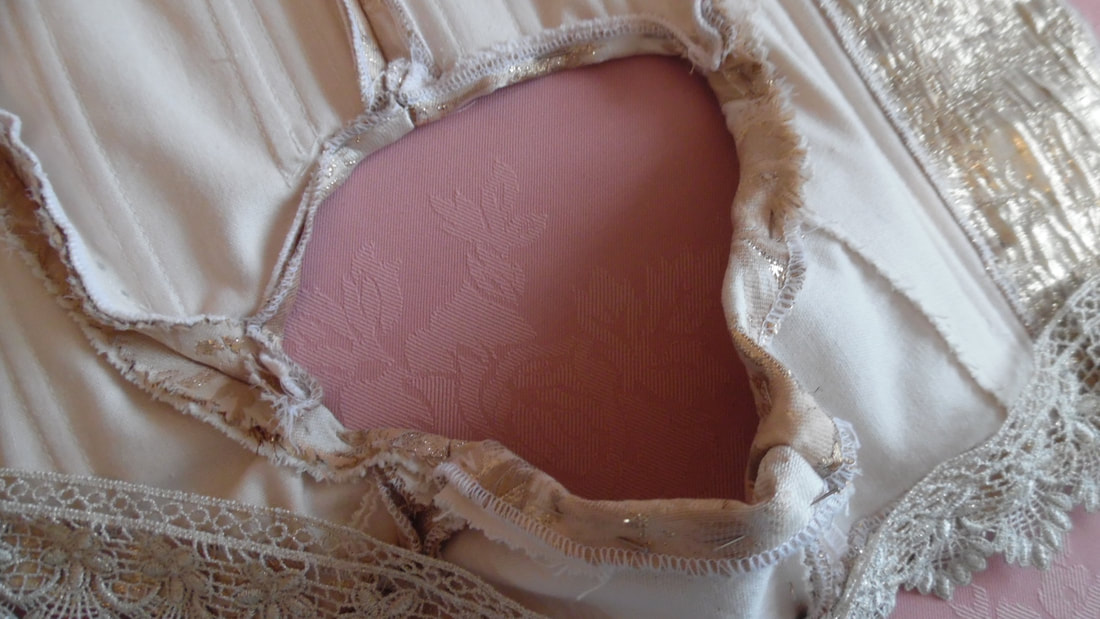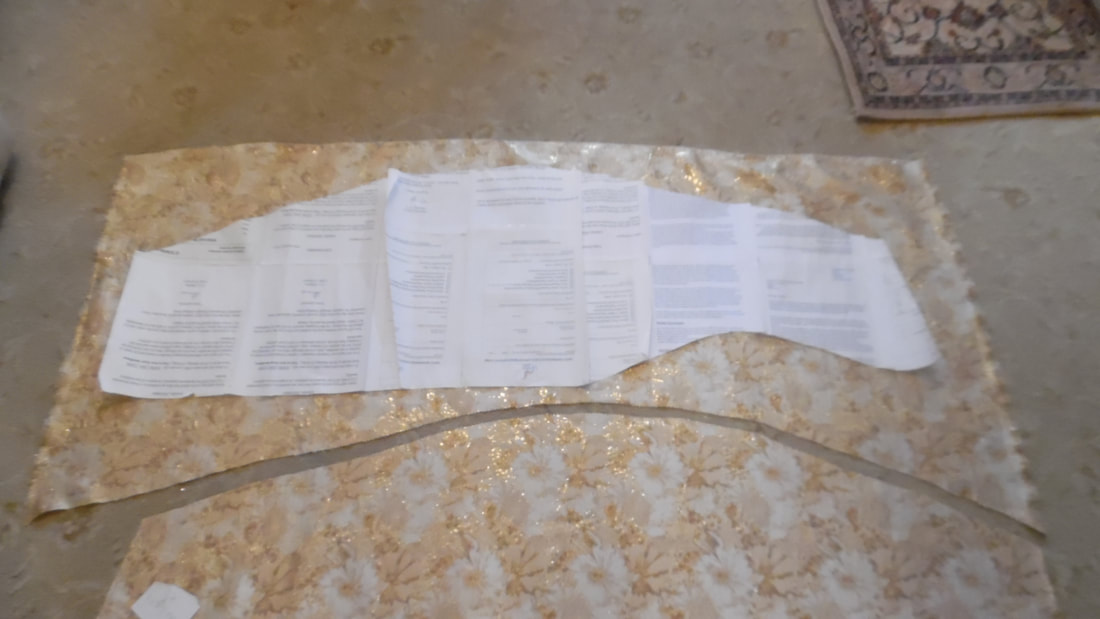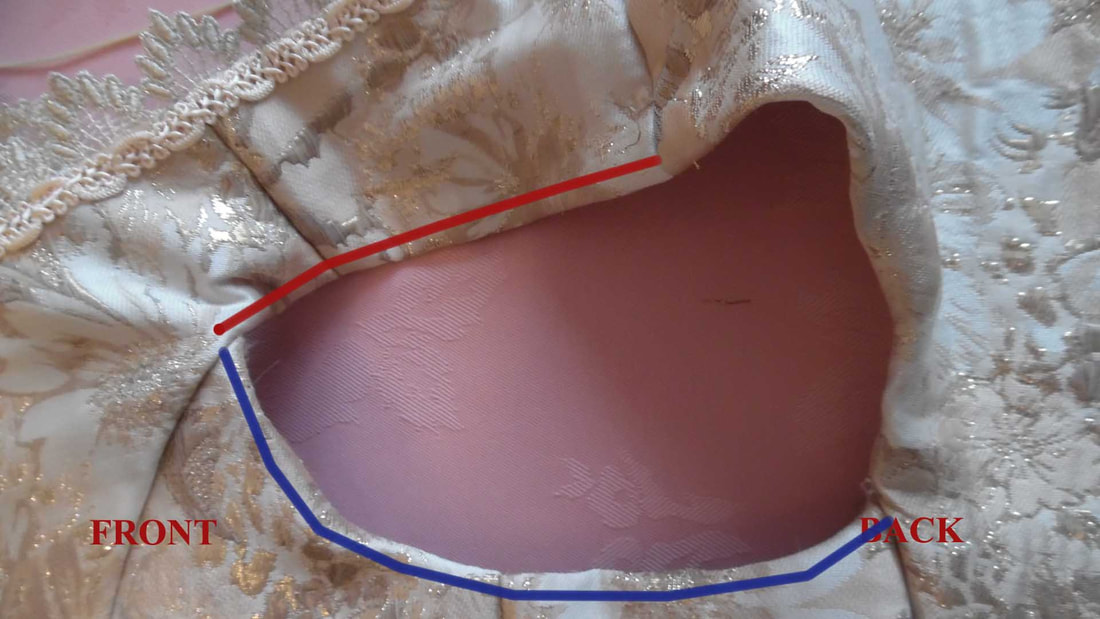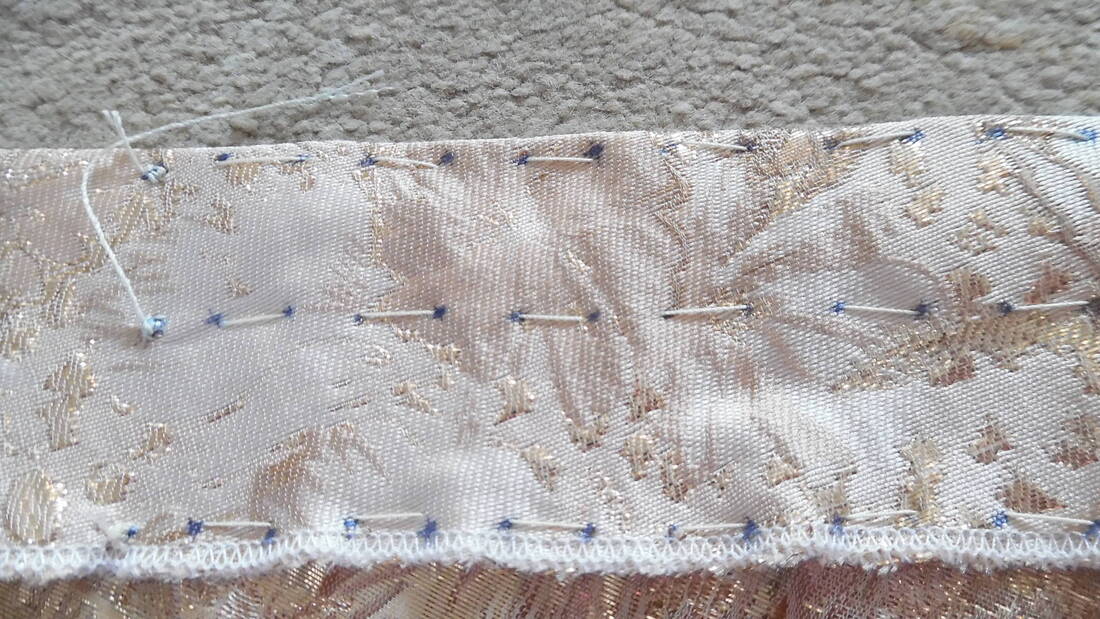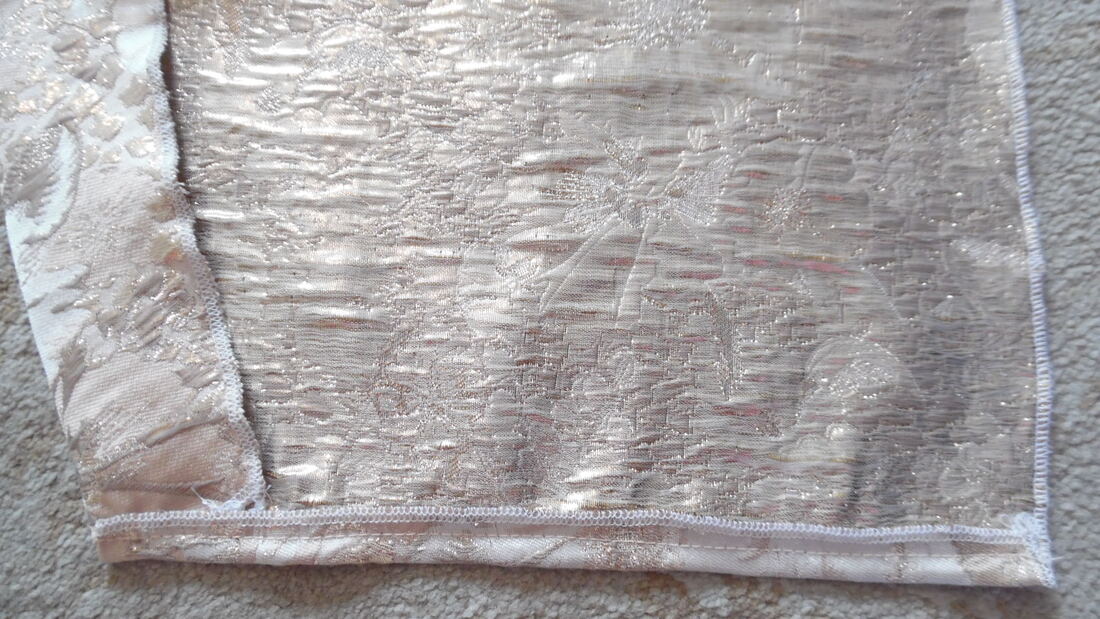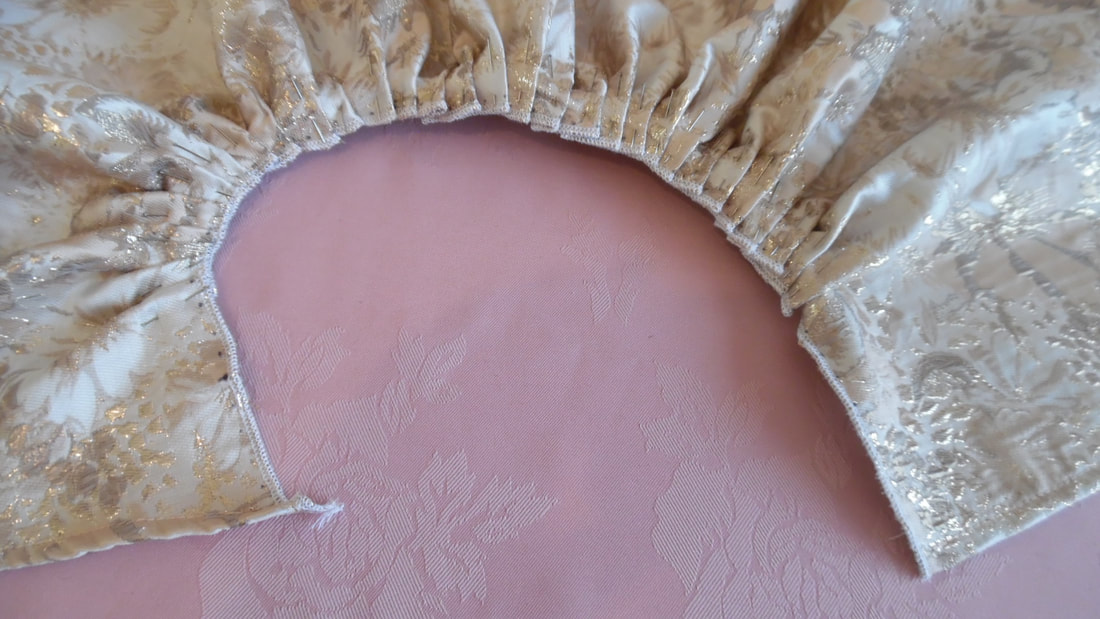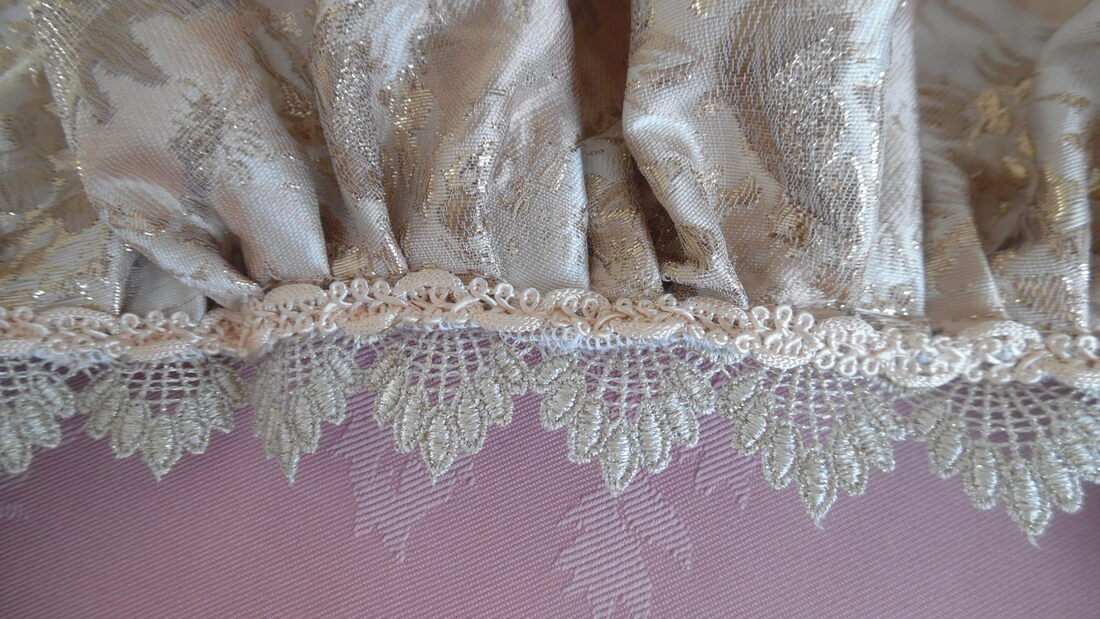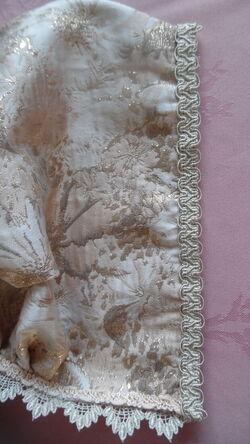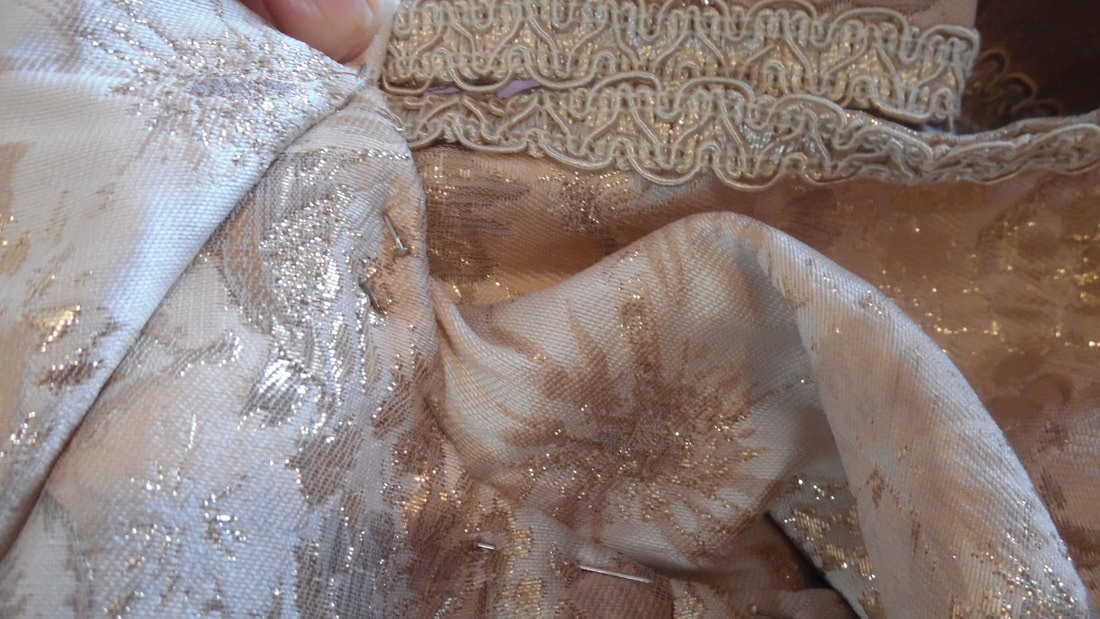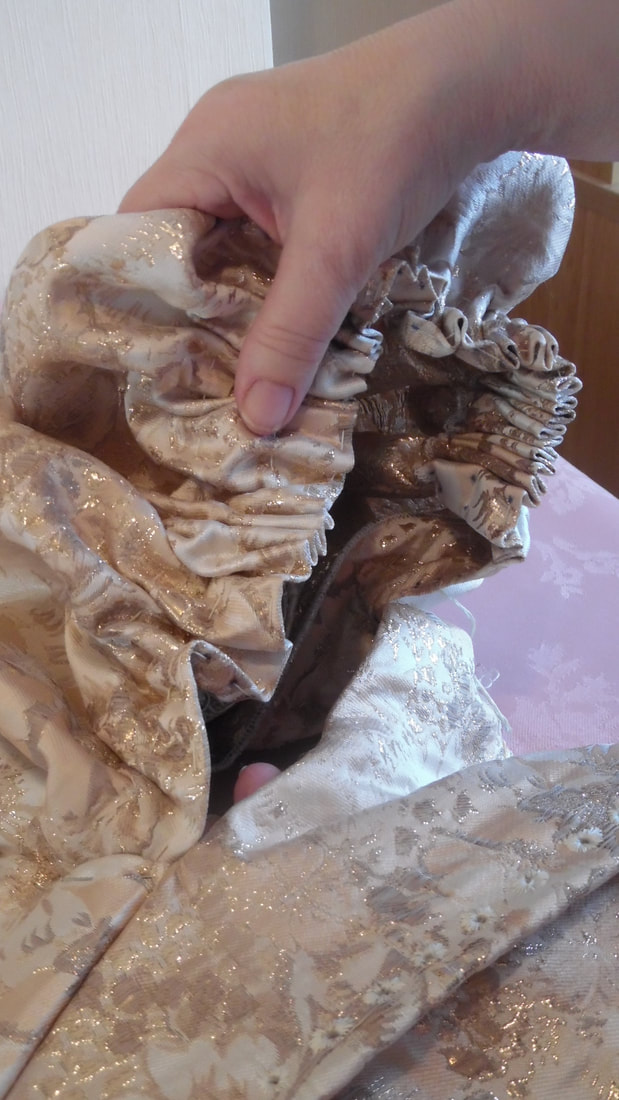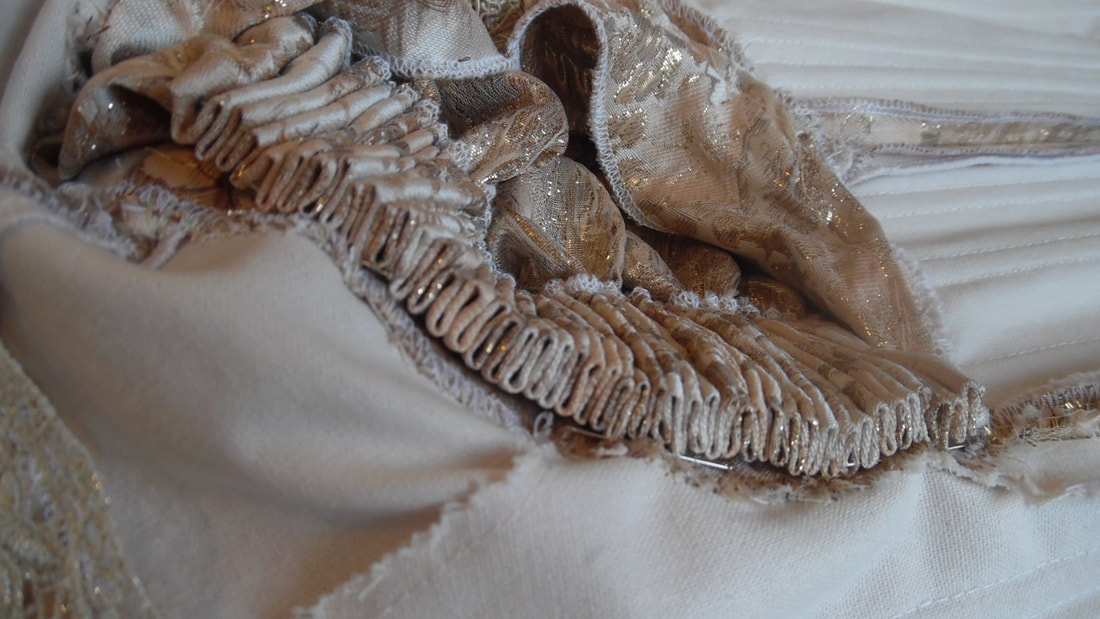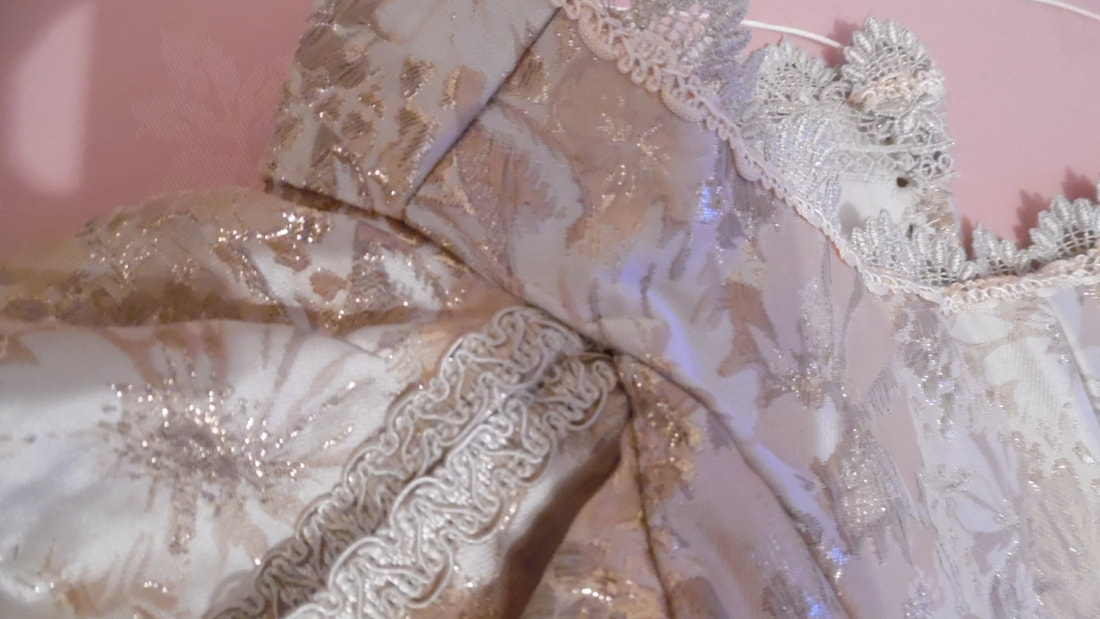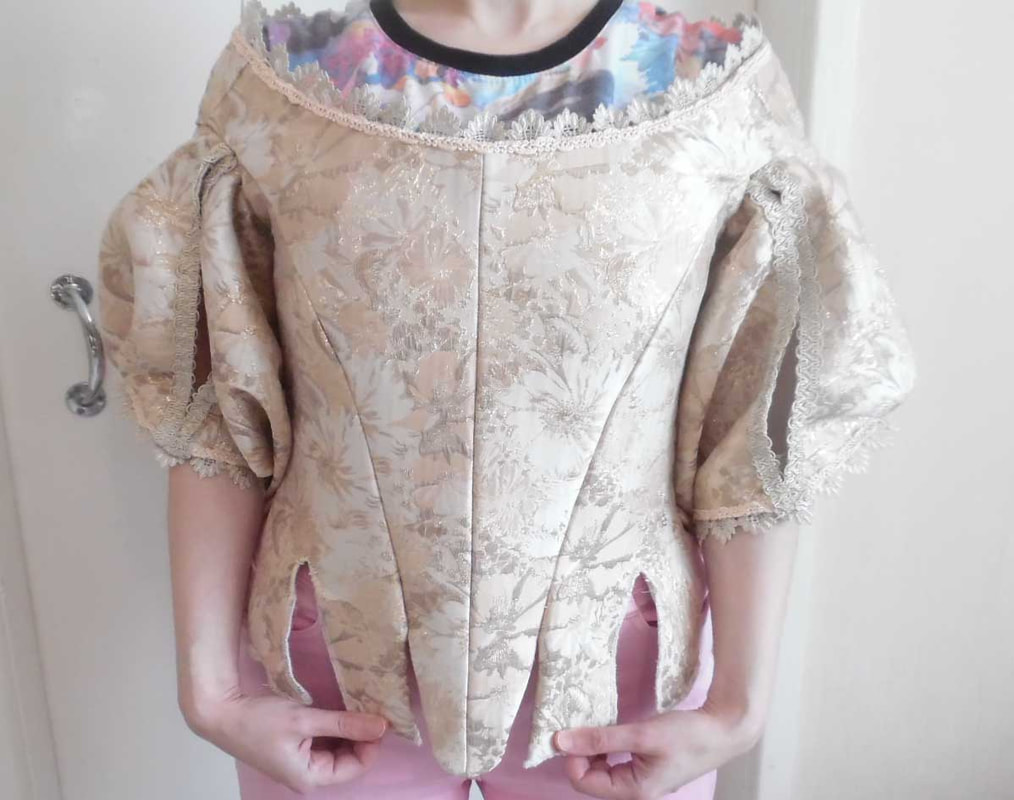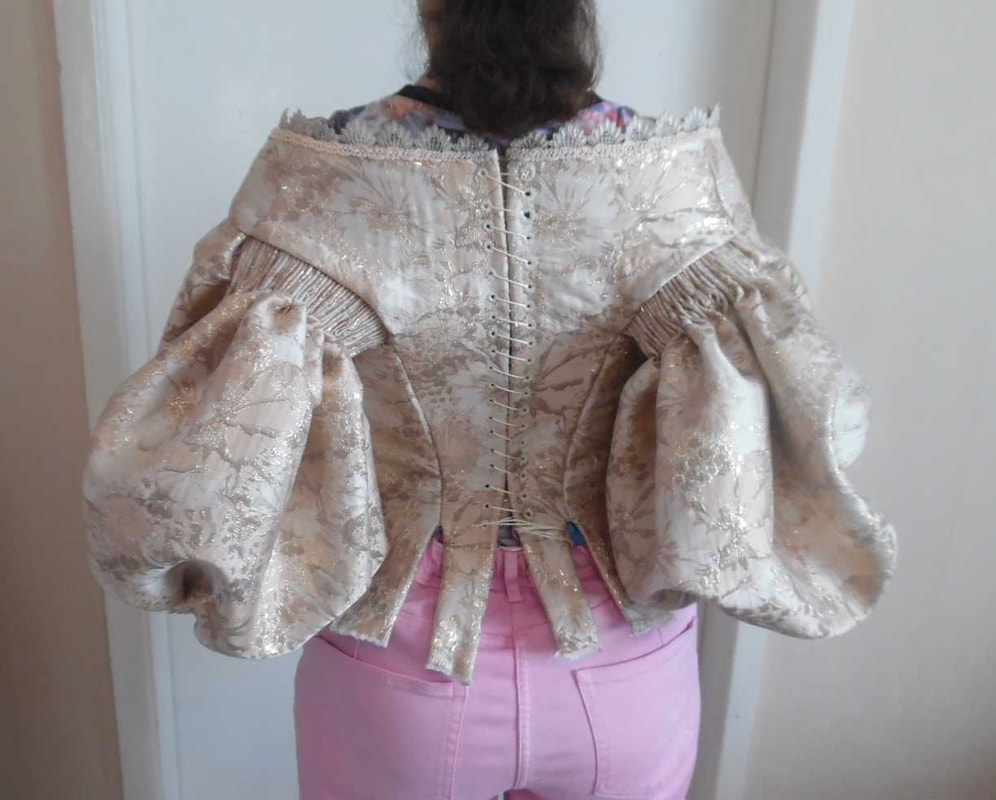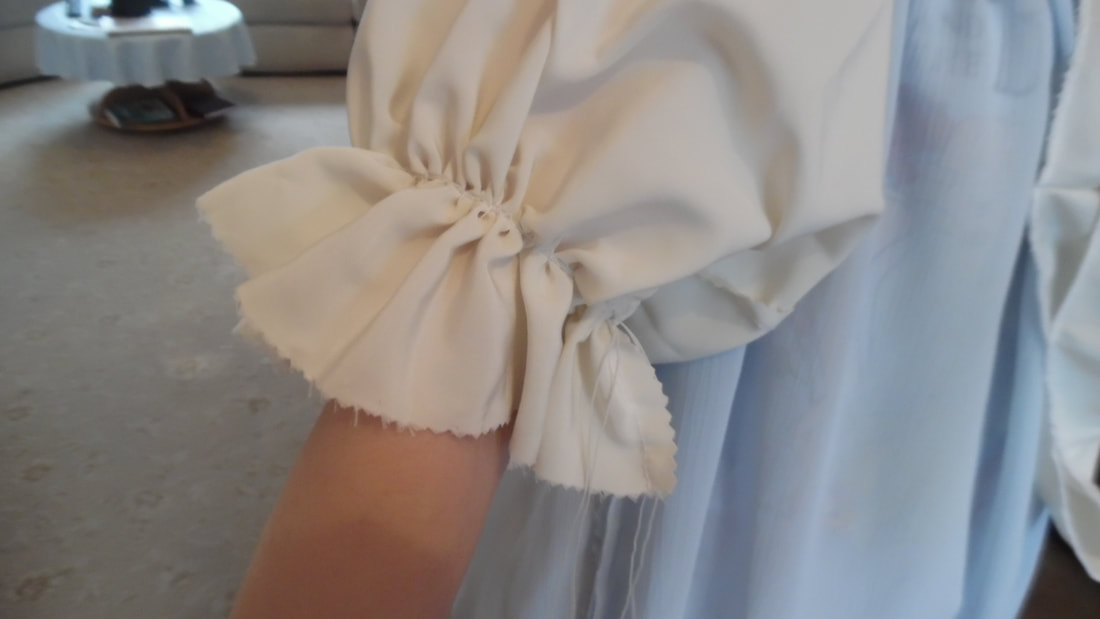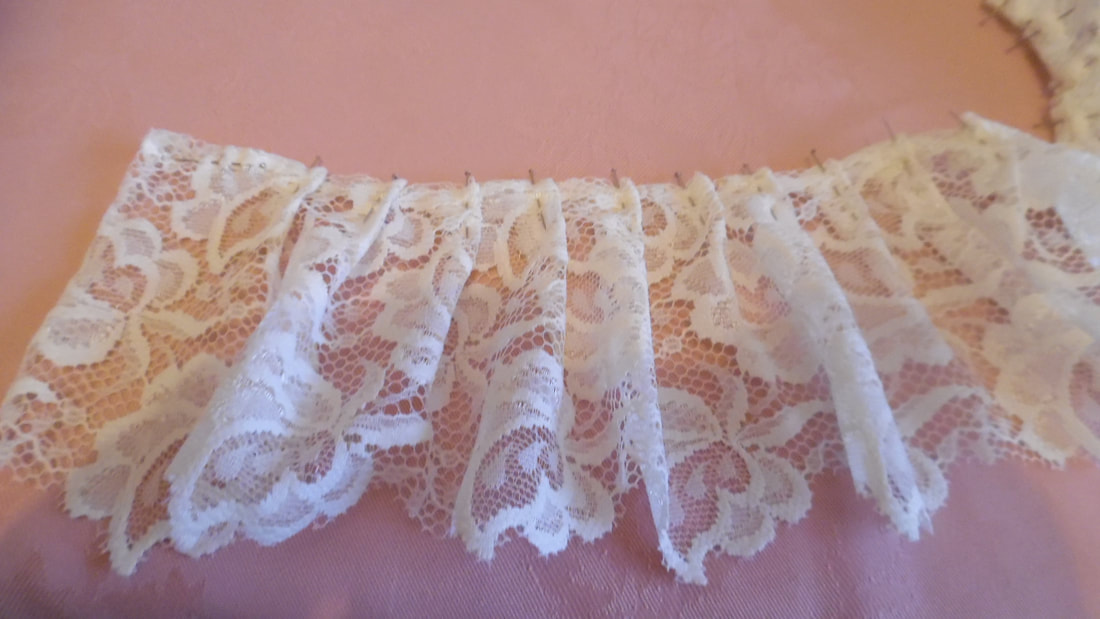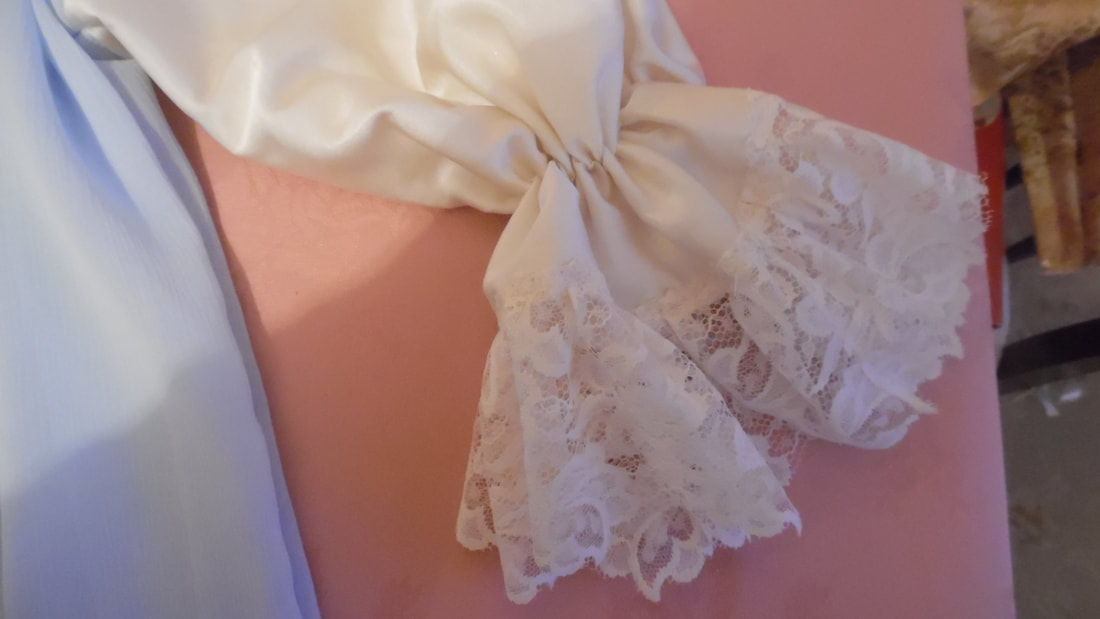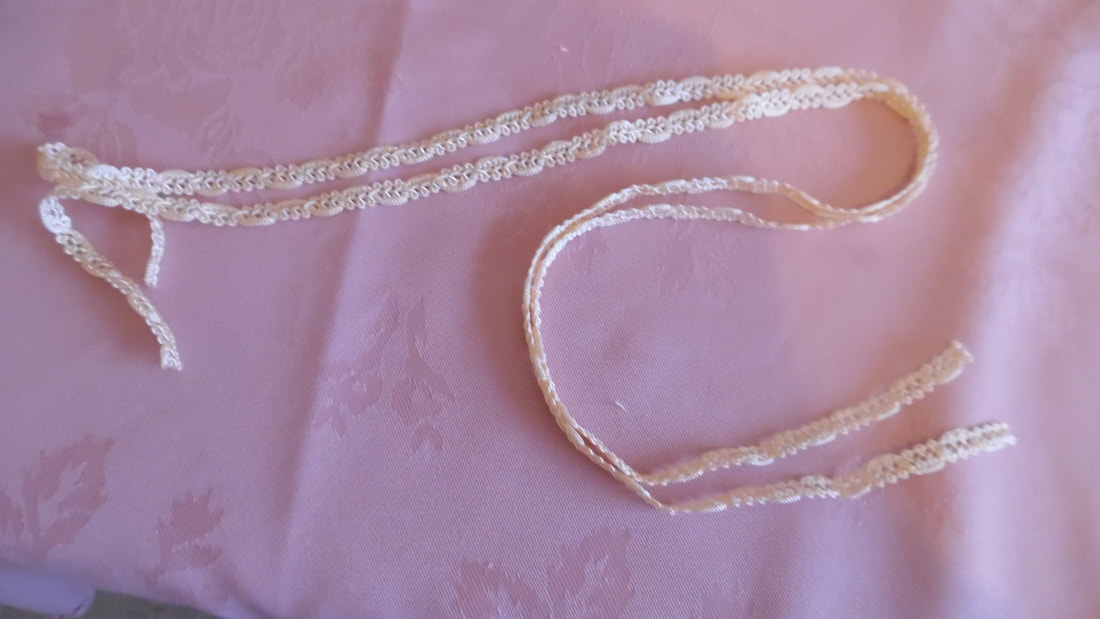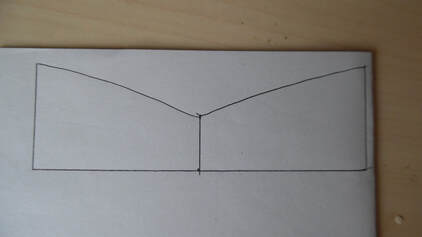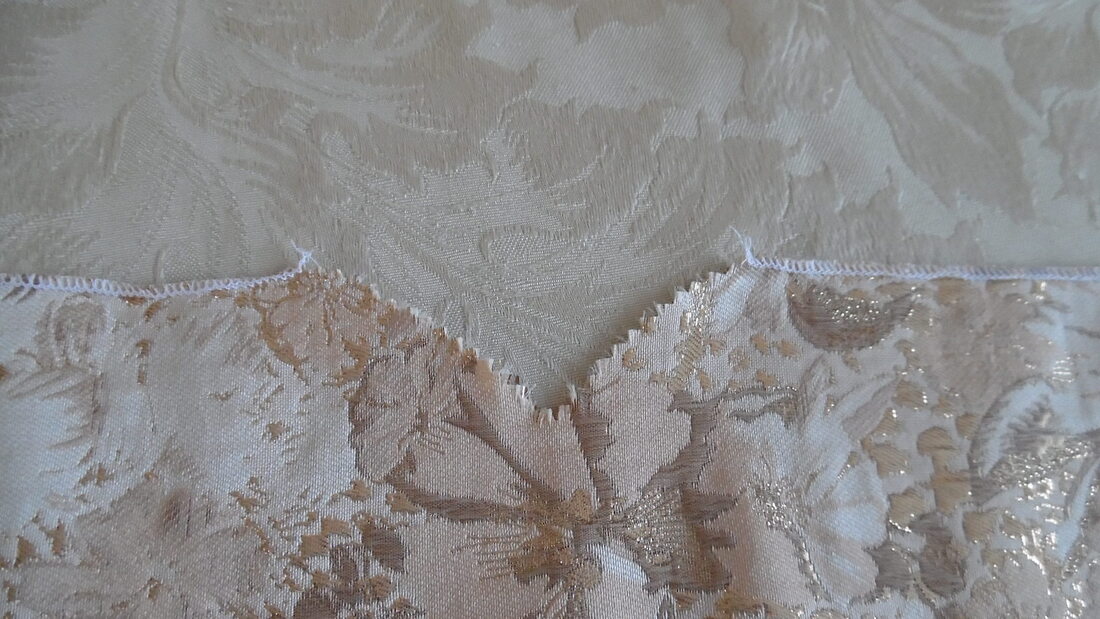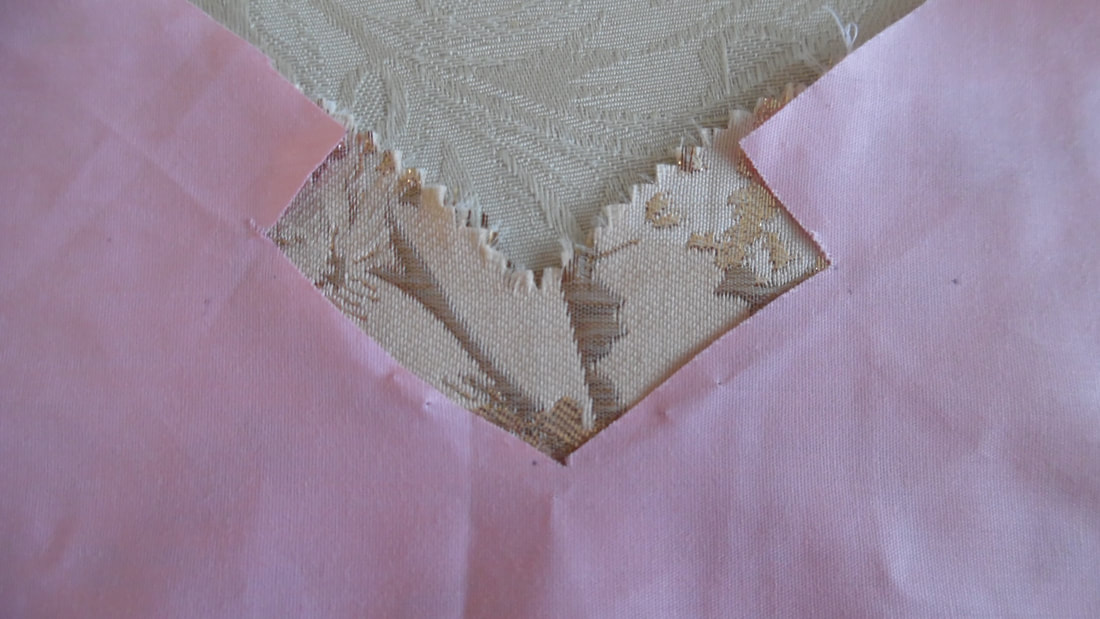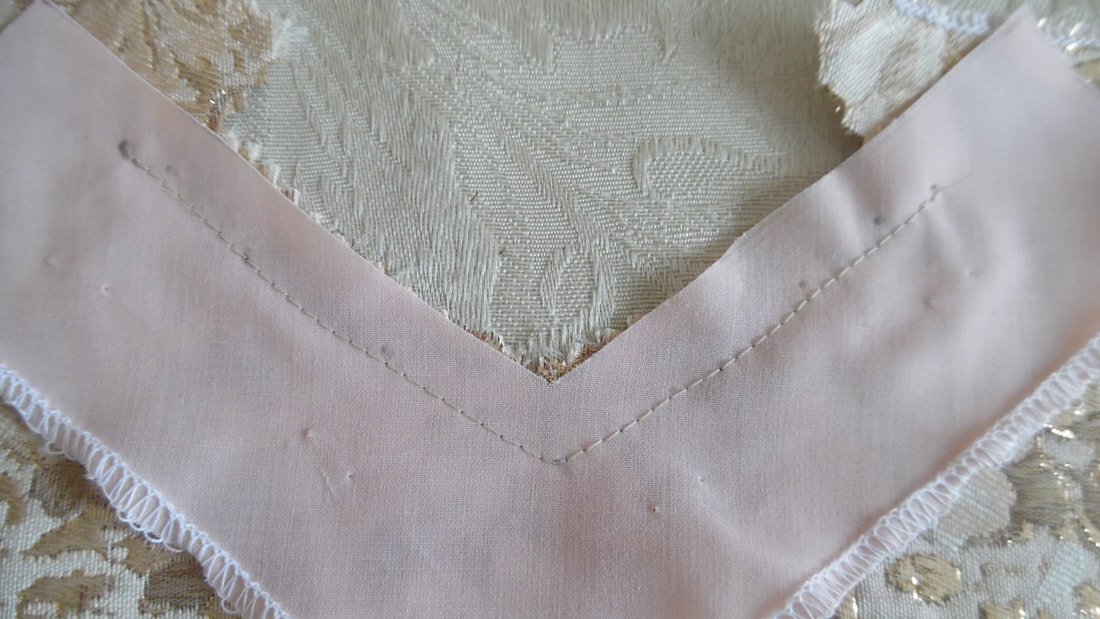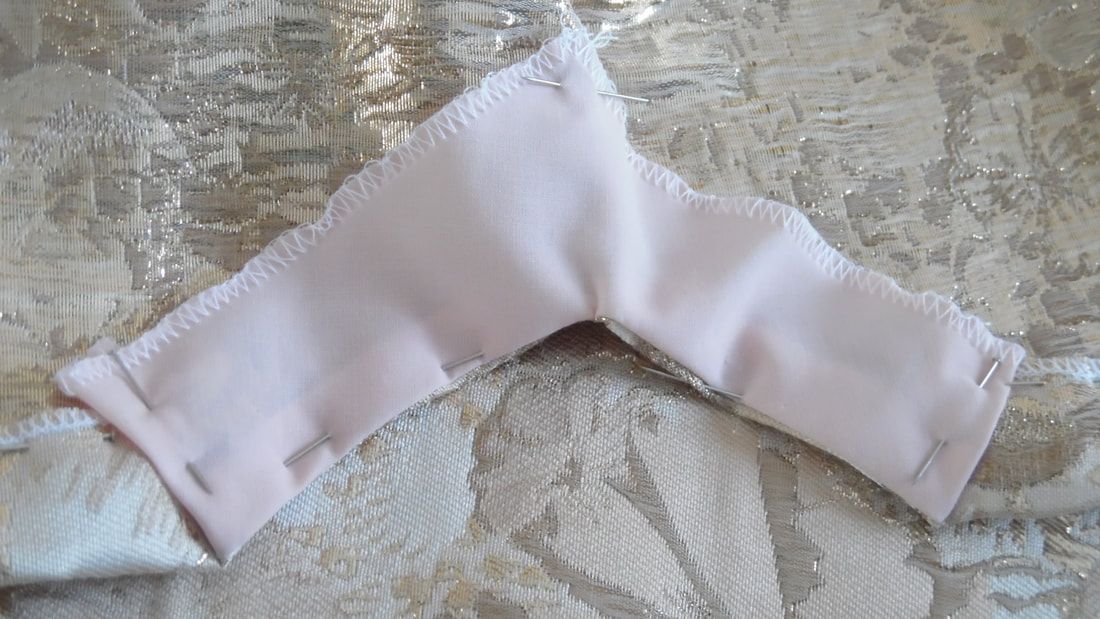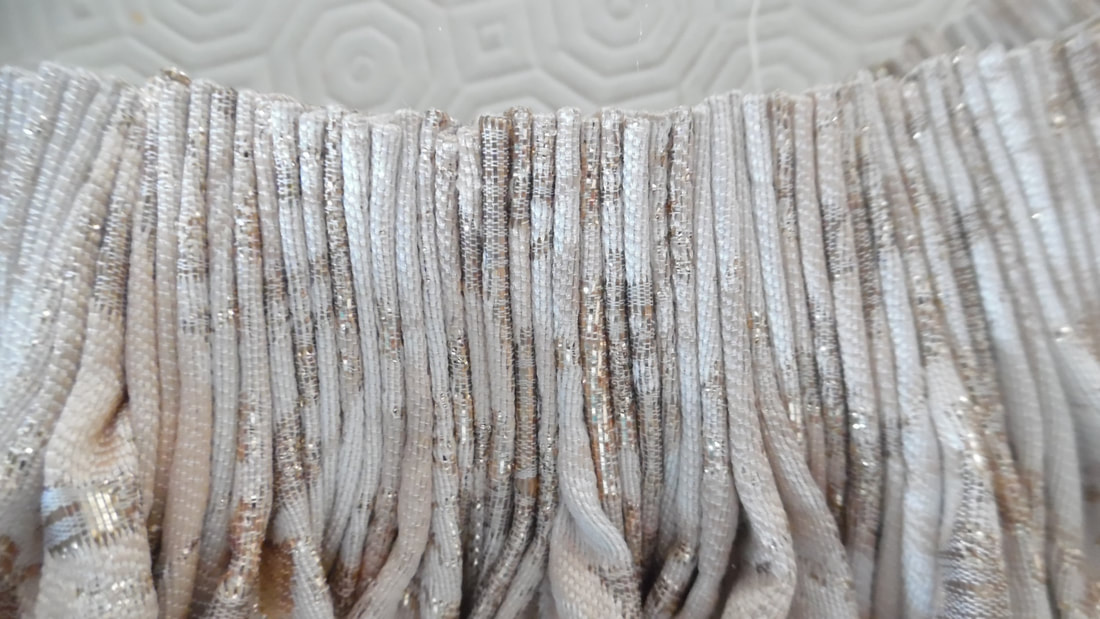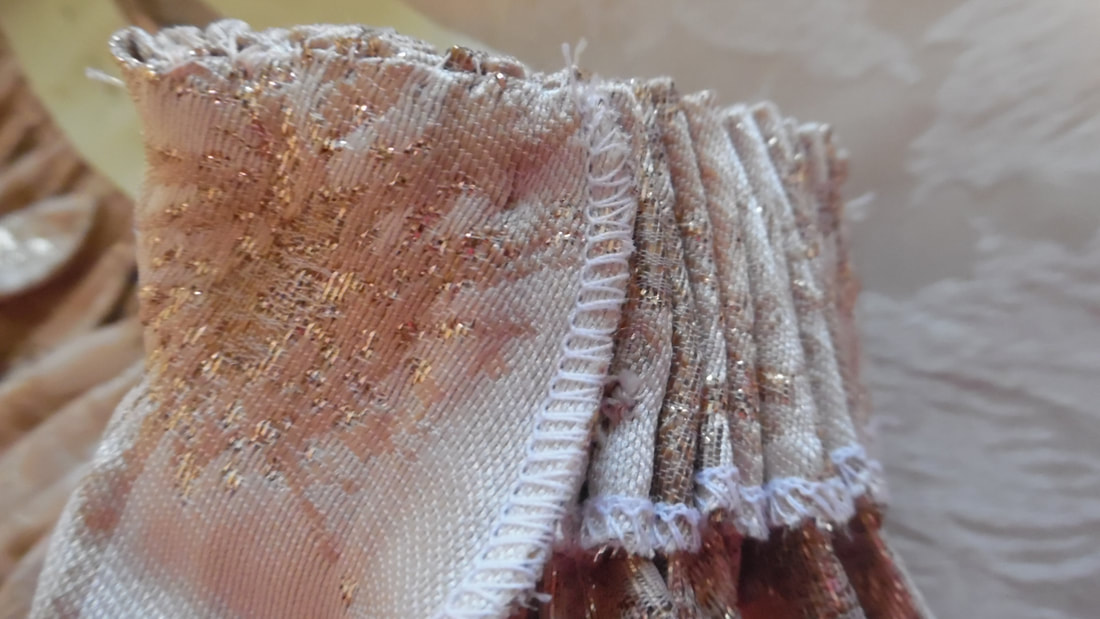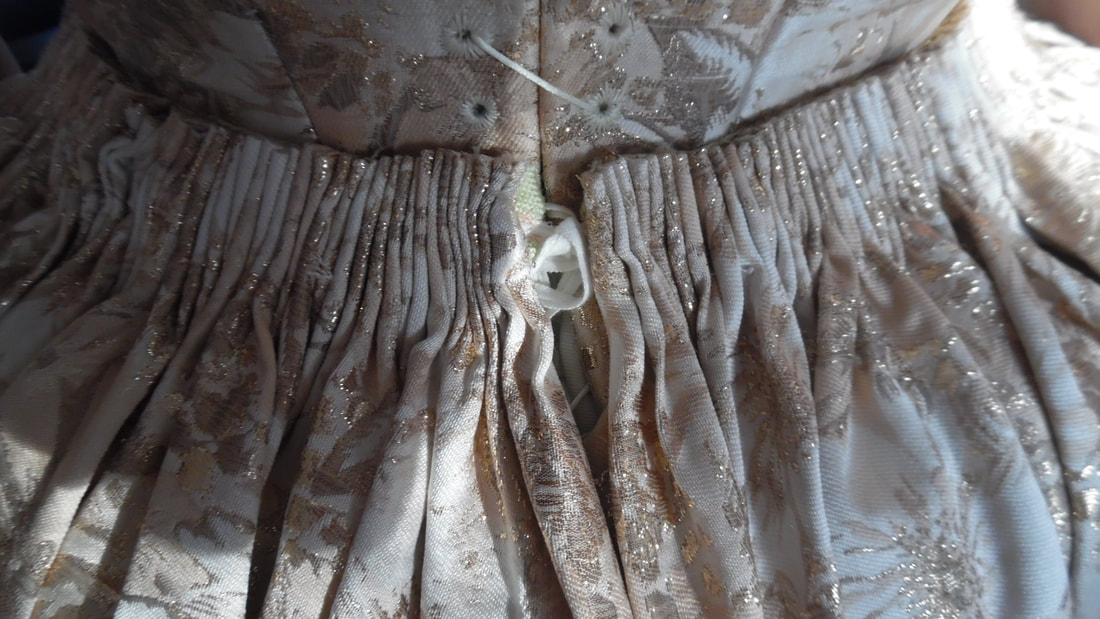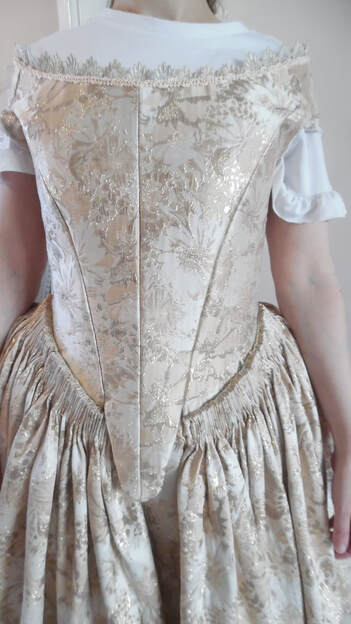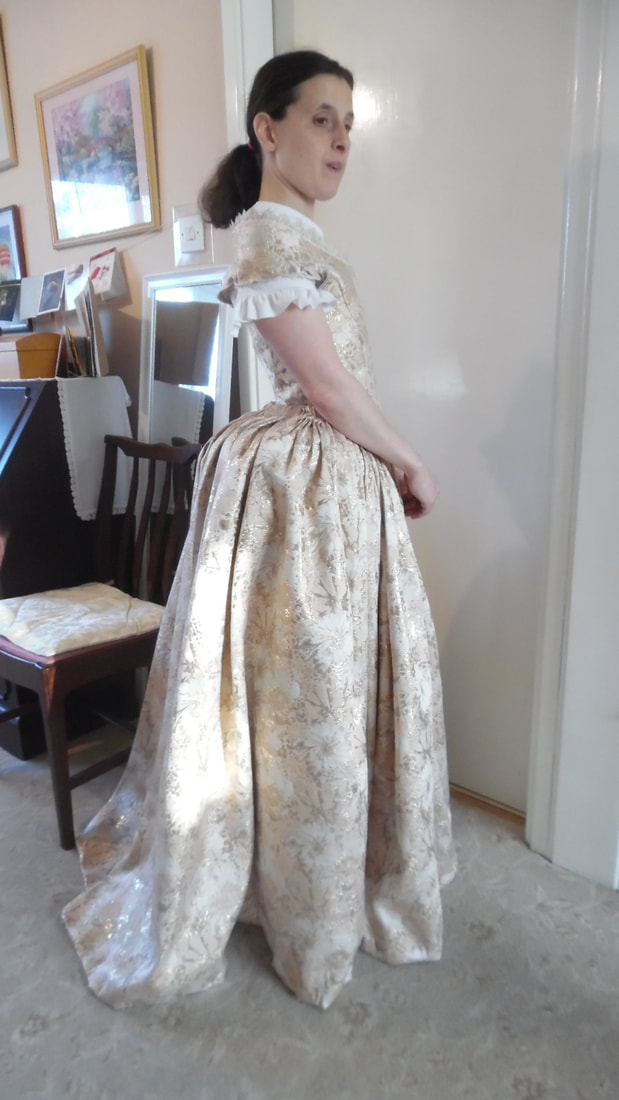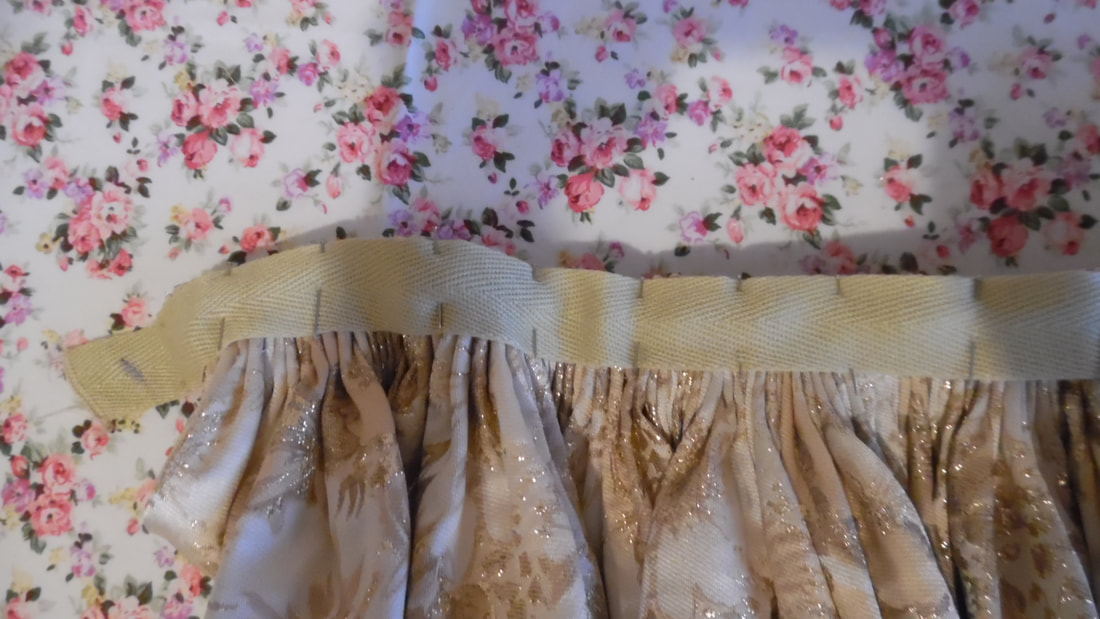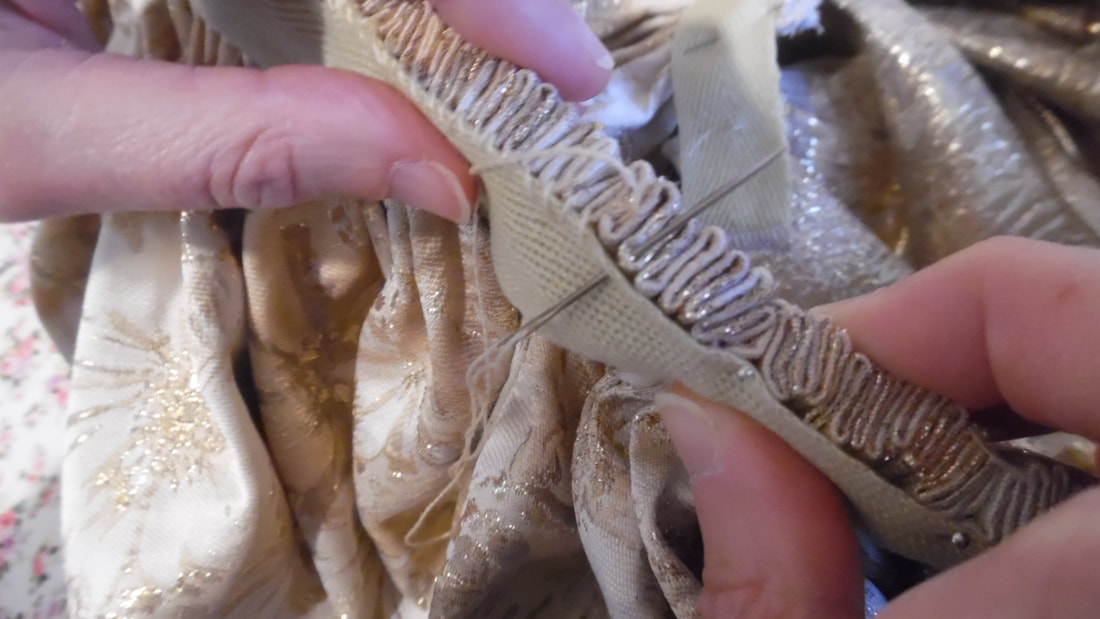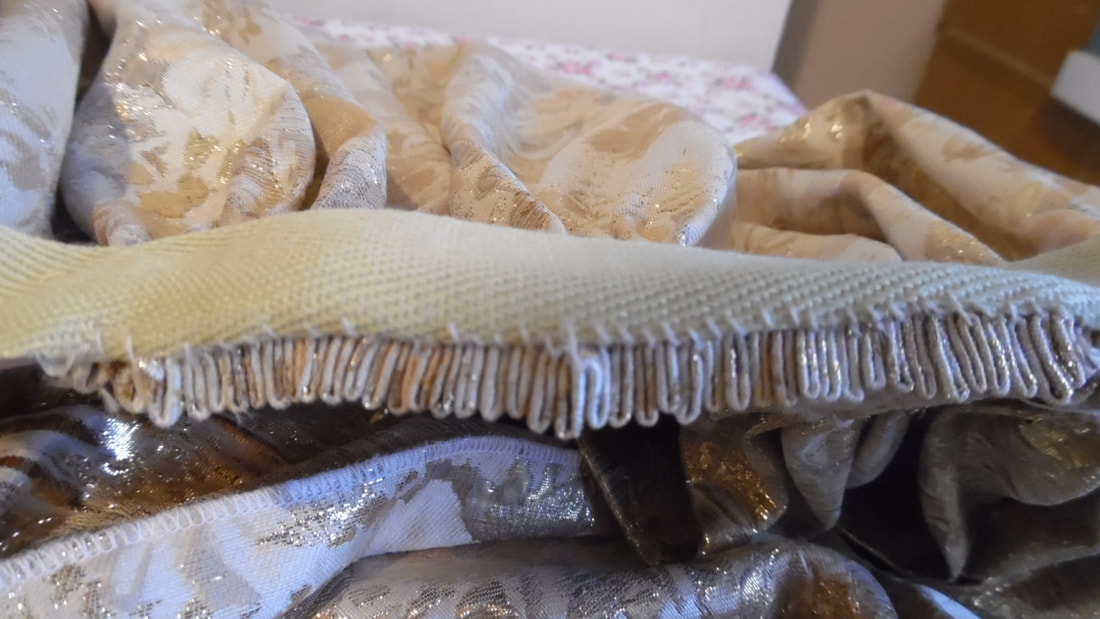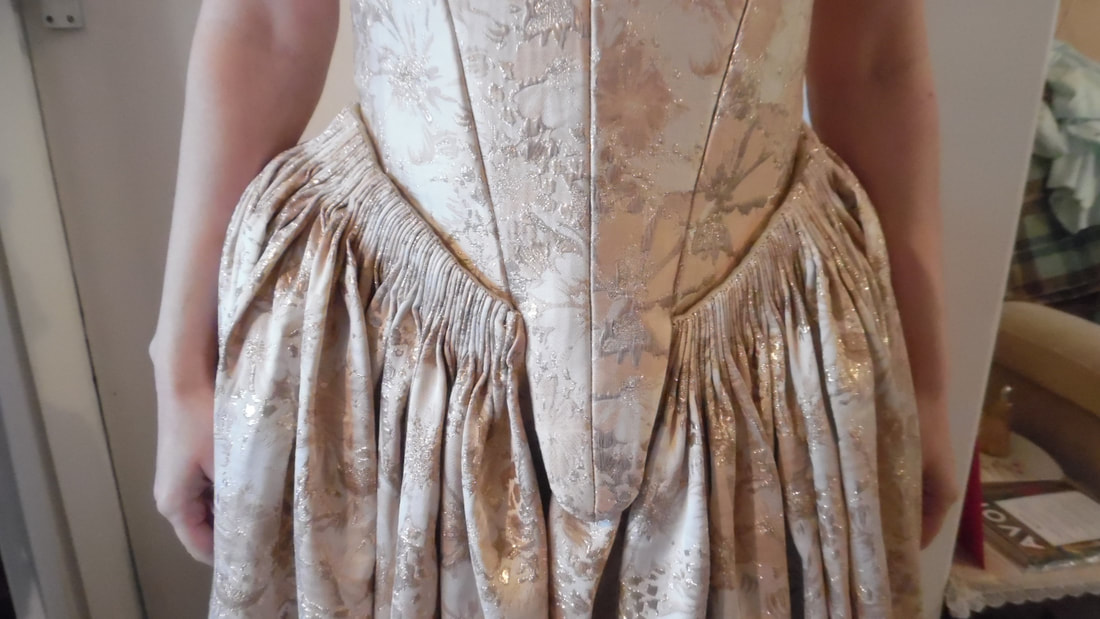Costume from
approximately 1640 - 1660 Based on Man
In The Iron Mask
Written instructions are to be used in conjunction with our videos
The stays and bodice were taken from Patterns of Fashion 5 by Janet Arnold
Materials:
Stays
Approximately 25 meters of synthetic whale bone 5mm wide. From venacavadesign.co.uk
Piece of plywood approximately 2cm wide x length of centre front
1 metre yellow Duchese Satin
1 metre cream medium weight cotton canvas From Ebay fabricguysonlin
Top stitching thread of contrast colour
Lacing to cover seams
Shift
1.1/2 metres chosen fabric, you can choose whatever you like to make this
1 metre of satin for the sleeves
1.1/2 metres Bias for neckline
Shirring elastic
Choice of lace for the cuffs
Pattern for sleeves Simplicity 9769
Bum Roll
These are made to the individual, so there are instructions on the video for this. The stuffing will depend on how much of a lift you want to your skirt. Having researched into this, it varied from person to person. These patterns should be easily available on the internet.
Scrap of cotton fabric and stuffing material
Length of ribbon
Under Petticoat
Approximately 4 metres of your chosen fabric. I used an offcut from a curtain as the fabric needs a bit of weight to it. So try and chose something similar to curtains for weight.
Bodice
2 metres fashion fabric
1/2 metre cotton canvass
Various pieces of lace to go around the top of the bodice, around the sleeves and along the sleeve slits.
Cord for lacing
Skirt:
6 metres light peach petunia floral gold metallic brocade fabric No. 1894 from Ebay
Piece of herringbone tape for the top of the skirt and enough to make ties.
Strong top stitching thread to suit colour
Wig: Bought from Abby of Bloomers ad bows wig facebook page here:-
https://www.facebook.com/bloomerandbowuk/
Construction:
Stays:
The pattern is to a scale of 1:4. 2 small squares = 1". This was taken from Patterns of Fashion 5 by Janet Arnold. Although this was the reference pattern, many alterations were made to get to the finished pattern to fit Tracy.
These were the final pattern pieces. Cut one set out of Duchese satin and one set out of canvas
When the pieces have been hand sewn together and the boning inserted, a bias binding is hand sewn around all the tassets and a decorative lace sewn onto the seams.
Lacing holes are then hand sewn down the front edges and also where the straps will attach at the top.
The gores are made and hand sewn between the front tassets.
The stomacher boning channels are first drawn on and machine sewn. The middle boning channel is wider to accommodate a piece of thin plywood.
Bias is hand sewn around the stomacher. The stays are laced from the bottom to the top.
Comparison photos to the original
This completes the Stays.
The Shift:
Measure your desired length, (approximately to the knee) and allow sufficient width so its not clingy and too tight to get into. The sleeves were made using pattern Simplicity 9769 82cm at the widest point and 41cm width. We knew we needed arm holes to allow plenty of room and practiced with different widths for a desired amount of material to peek through the main dress slit on the sleeve. As we weren't sure at this stage what the inner sleeve looked like because of lack of photo evidence, we took a guess for the length, with hindsight, these should be approximately 6" (15cm) longer.
Measure your desired length, (approximately to the knee) and allow sufficient width so its not clingy and too tight to get into. The sleeves were made using pattern Simplicity 9769 82cm at the widest point and 41cm width. We knew we needed arm holes to allow plenty of room and practiced with different widths for a desired amount of material to peek through the main dress slit on the sleeve. As we weren't sure at this stage what the inner sleeve looked like because of lack of photo evidence, we took a guess for the length, with hindsight, these should be approximately 6" (15cm) longer.
Measure around the body where the neckline will sit on the shoulders and cut a piece of bias to this measurement. Gather the front, back and sleeves individually. If you try and do it all in one go, if the thread breaks, you will have to start again. You now need to fit this onto the bias.
Bum Roll
See video
See video
Under Petticoat
This is cut as a front and two backs, the front is approximately 188cm wide. Put the bum roll on first and have someone measure from your waist to just above your feet. Take a second measurement at the side waist going over the bum roll. Take a third measurement centre back going over bum roll. Lay your pieces down and mark your measurements. You will notice that it slopes up towards the back. Sew the sides seams together. Because I am using old curtains, I kept the hem line as it was already sewn for me. You will need to allow seam allowance to yours for the hem.
This completes the under petticoat.
The Bodice:
The pattern was taken from: Period Costume for Stage & Screen by Jean Hunnissett 1500 - 1800. This shows the original first cut and the final cut. Cut two pieces each from canvass and one piece from fashion fabric.
One part not photographed is the lining piece for the front centre section, but this was videoed.
Sleeves:
|
This is where you will have to make a very difficult decision, because there are countless different sleeves to choose from during the period. We decided to make it quite roomy in keeping with the main character from Man in the Iron Mask, so ours is quite wide. 52" (130cm) and 18" wide (46cm). There is also an unlimited amount of designs for slits, or gathers or cartridge pleating. We decided it would be cartridge pleated, which meant we had to allow for another 2" (5cm) to turn over the top hem, exactly the same as we did on the skirt.
|
|
After turning a hem, (but don't sew it down), you will need to measure from the front seam of the bodice arm hole to the second seam towards the back. We made this 6" (15cm). Then measure from the same front seam underneath the arm to the seam at the back of the bodice, we made this 7" (17cm), Yours will be a different. This area is to be left un-gathered, mark three rows of 1cm apart sideways and 2cms apart down. (see below)
|
You will need to use a top stitch thread as it will need to be very strong. You will also need to turn both ends and sew them.
This completes the bodice
Continuation of making the shift.
This completes the shift. The sleeves will be pulled up when the bodice is on and a piece of lace tied around just above the elbow.
Skirt:
First you have to take measurements, front, side and back, the same as the petticoat. Tracy wanted a long train so we added about 40cms to the back length. You should make the bodice BEFORE you make the skirt then you measure the front "V" at the height of the first tassets. Allow enough material to turn up a hem.
If you "pink" the "V", it should not need overlocking. We overlocked the top edge because it frays a lot.
|
I then need to make a template as this front section is going to have a facing. I made it 1.1/2cms wide than the centre front bodice piece, which is approximately 6cm wide.
|
Cut out the shape, then using your facing material (doesn't matter what you use) give this a 2" (5cm) margin all round and cut it out.
|
|
|
You should end up with this shape "V", I extended the left and right pieces by about 2cm. I also overlocked the bottom of the piece. Machine sew this as shown, going past the dress fabric about 1cm. Snip up to the centre "V" being careful not to cut the stitches.
|
We are just doing a practice fit at this point. As you can see from the picture below, the cartridge pleats do not sit on the bodice properly, so we are now going to add a tape to make the cartridge pleats flatter. The hem was turned up.
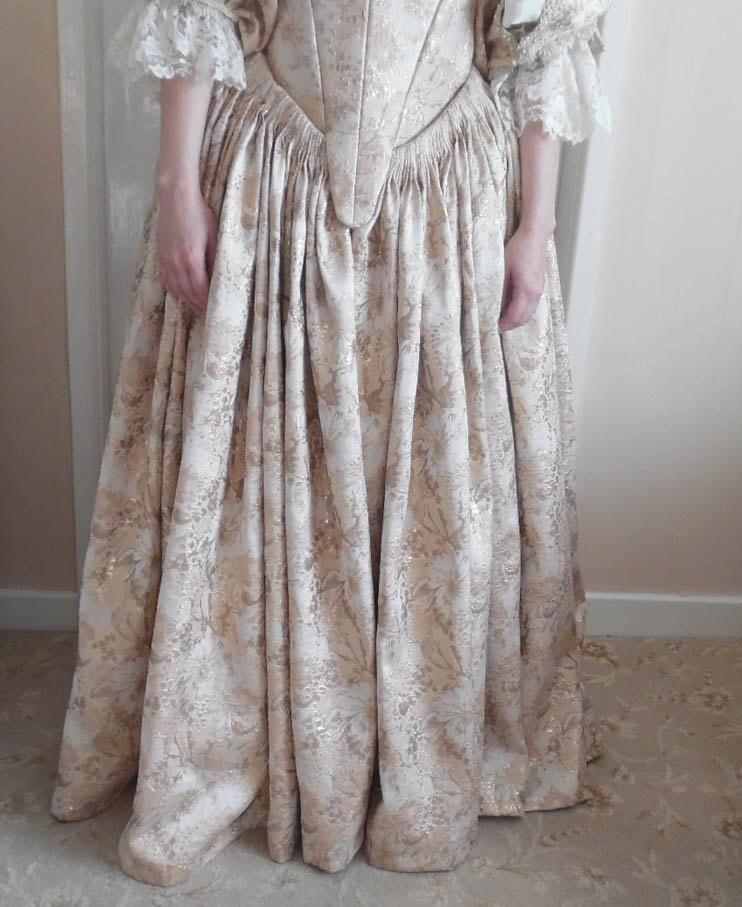
This completes the skirt.
